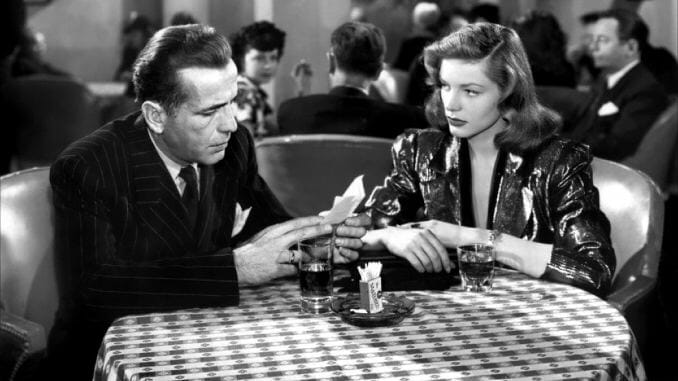
Since its coining in 1946 by French critic Nino Frank, who observed from afar something dark, quite literally, going on at the American cinema, the term “film noir” has been debated and debated and debated some more. Is it a genre? A subgenre? A movement? A trend? A commentary? A style? For the purposes of this introduction, let’s call it a response.
Noir was nothing if not a reaction, a reflection of a nation reeling from despicable evil overseas and revolutionary upheaval on the domestic front. It started matter-of-factly enough. The men—including the screenwriters—had gone off to fight, and as the women stepped up, into the public sector and newfound independence, studio chiefs turned to the fast-and-cheap pulp mysteries of Raymond Chandler, Dashiell Hammett, and James M. Cain for their next productions. International directors like Fritz Lang, Michael Curtiz, and Robert Siodmak, who’d honed the dramatic visuals of German Expressionism, fled their war-torn homes for the plentiful opportunities in Tinseltown.
But things get complicated here, and fast. See, noir didn’t play by any rules, not really. We think of noirs as urban stories, but that’s not always the case—for every L.A. and N.Y.C.-set saga, there’s a small, heartland tragedy. We think of a never-ending, rain-soaked night—sunlight replaced with neon and nocturnal reflections, the optical trickery of mirrors and shadows—but in contrast, the days of noir scorched its characters. We admire its heavily stylized approach—exaggerated camera angles, tension-crafting mise-en-scène, flashbacks, deep focus and trademark shadows—but also its neo-realist and documentary-like experiments. We talk about noir plotting and tropes, but in fact it drew liberally from the gangster pics of the Depression/Prohibition era, crime procedurals, heist movies, horror films (again, the German Expressionist influence), romantic melodrama, Gothic thrillers, tawdry B-movies, and that other quintessentially American breed, the Western. Though its blueprints were everywhere, noir forged its own language, its own playbook, its own universe.
Some define noir as or by a tone, and it’s very much a mood, a sensibility. Noir is a state of mind, of subconscious, a fever dream, an existential crisis. Life had grown profoundly strange for its first-generation audience … off-balance, alienating, lonely. Think about it: As the classic period of noir, generally regarded as 1940-58, wore on, more jaded and pessimistic, shell-shocked soldiers were returning to a forever changed urban and suburban landscape. Homes they didn’t recognize, communities that had gone on in their absence, workplaces that no longer needed them, and wives who weren’t dependent on them anymore. The roles were reversed, the world was upside down. Things didn’t make sense. All that paranoia and pathos, before the second Red Scare.
Enter the private detective and his antihero ilk—a scarred, brooding fella who for his considerable flaws was sympathetic. You couldn’t say the same for the ladies, what with that Madonna-whore complex running rampant through noir’s icky Freudian gender dynamics. Unless they were a good, subservient girl, women were brazen, sexual bitches, more often than not smarter, and more powerful, than the guys—at least at the outset. Extrapolated to the off-screen world, the logic was, solve the crime, solve the problem. Put the femme fatale in her place, show the girl—the world—who’s boss. Take it all back. The nightmare was made wish-fulfillment. It’s not overreaching to read all of this from the 300 or so titles generally considered the classic noir canon. Remember: The folks at the Hollywood Production Code couldn’t handle it either, mandating changes in service of propriety, i.e., social conformity. (Had Will Hays, Joseph Breen, and their censoring kind not been around, noir would’ve been an even more nihilistic realm.) In any case, the M.O. was linear: Talk it out, trace the clues, tell us about it with a voiceover.
Except it wasn’t that easy. Like the ink on those yellow hard-boiled pages, film noir was a smeared affair from the start—hard to define and harder to reconcile. Its characters were dirty, displaced, disillusioned, distrustful, just plain dumb. Everyone was running some kind of scam, even the cops—especially the cops. Everyone was out for themselves, phonies subject to their basest fears and vices. The attraction was as ugly as the repulsion. When he wasn’t a truth-seeker, our protag was often a criminal, at the very least someone of ambivalent moral code or weakness, a fall-guy running out of time, and hope for redemption. The world was a cruel and perilous place, be it the crowded streets or open road, the inner city or a rural outpost. There was no escape, no forgiveness. In fact, perhaps the only clear-cut element of noir was the razor-sharp, imminently quotable dialogue, and its venomous sense of humor.
And so noir cast its misfits—gun-toting, hard-drinking, lipstick and stiletto-wearing human chimneys of neuroses—into a seductive, violent postwar labyrinth, in which the terror was internal and external. Fear of the next world conflict, fear of each other, fear of never getting back to a pure time, the fear in realizing there never really was one. A study in extremes that dealt in innuendo (thanks again, censors!) as it departed from accepted cultural norms and, sometimes, basic humanity—film doesn’t get more perverse, or more unapologetic about it, than the noir environment.
Was noir a conscious “response”? It’s pretty tough, given the very deliberation of filmmaking, to think noir was just a happenstance bunch of flicks that expressed the same anxieties and subverted the same sociopolitical conventions—at least after the first few years, when World War II had ended. And while by the time of 1958’s Touch of Evil noir was a shrewdly self-aware conceit, it’s worth going back to who coined the term just 12 years earlier.
An outsider called it. A bystander observing a uniquely American phenomenon. And, for decades, a largely unacknowledged bystander at that.
However (un)conscious a reaction, noir resonates to this day, with several neo-noir cycles beginning with the Cold War era through Gen X and the millennials. And while a healthy share of neo-noirs make our list, the classic period remains the most telling—context is critical. Then there are the sub-classifications within the subgenre: Proto-noirs, foreign noirs (like the British “Spiv” cycle), neon noirs, and, of course, neo-noirs.
Maybe that’s what makes a list like this so problematic—Raging Bull has strong noir elements, as do Hardcore, Klute, To Live and Die in L.A., Reservoir Dogs, Payback, and Collateral. The first Sin City is a terrific pastiche, as is Carl Reiner’s more sincere homage, Dead Men Don’t Wear Plaid. The original Insomnia was a brilliant reverse noir, exchanging the claustrophobia of night for Nordic midnight sun. John Woo’s classic actioner Hard Boiled is self-explanatory. And in the tradition of Blade Runner (No. 29), modern sci-fi films from Gattaca to Ex Machina possess inarguably noir traits. So how do you draw a line in an ambiguous-by-nature whatever it is?
We’ll start with the following 100 titles. Some 70 years after the term “film noir” was first uttered, take a trip through the screwed-up terrain of the mid-century psyche, with all its sex, lies, and crime scene tape. Let’s get going—don’t say we didn’t warn you.—Amanda Schurr
Here are the best film noir of all time:
100. Angel HeartDirector: Alan Parker
Year: 1987
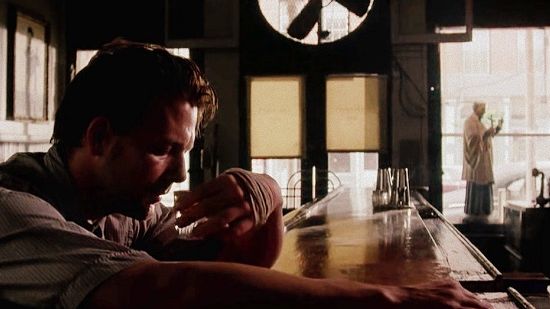
Voodoo plays a prominent role in this Alan Parker noir, equal parts hard-boiled detective mystery and horror movie. As gumshoe Harry Angel in 1950s Harlem, Mickey Rourke is at his best, hired by a devilish-looking man (Robert De Niro) to track down a big band singer, only to be lured into the occult subcultures of Louisiana. As Angel’s investigation takes him south from New York City to the New Orleans neighborhood of Algiers—a change of scenery suggested to Parker by the story’s author, novelist William Hjortsberg—the color-drained, highly stylized production reflects his descent into hell. Parker wrings the humidity and torrid filth from each frame. You can practically smell the pervasive overripeness and touch Angel’s sweat-crinkled suits. The feverish mood boils to the surface, giving up bodies and body parts of assorted creatures. Lisa Bonet, as chicken-loving priestess Epiphany Proudfoot (yup), exudes a delta sensuality; the MPAA required trims of her and Rourke’s blood-bathed sex scene. Headlines aside, Angel Heart is a wanton spectacle whose extremes suit the noir genre. —A.S.
99. Hard EightDirector: Paul Thomas Anderson
Year: 1996
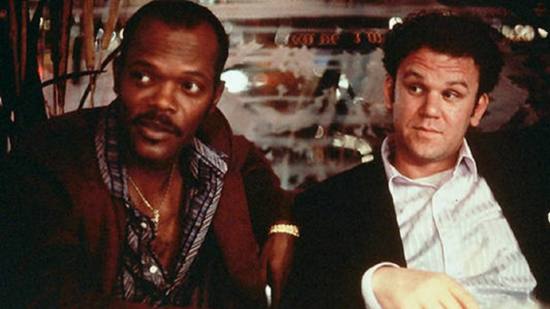
Paul Thomas Anderson made his feature debut with this underrated, underseen crime drama, in which Philip Baker Hall’s aging gambler Sydney takes young halfwit John (John C. Reilly) under his wing, all the way to the Vegas (and then Reno) craps tables. Hall is fantastic in this nuanced character study, a methodical, stand-up gentleman whose sell to Reilly starts with the old “Give a man a fish vs. teach a man to fish” philanthropy and goes downhill swiftly thereafter. Just because he’s straightforward and direct doesn’t mean his cards aren’t held closely to his vest, at physical risk to others. In an early, against-type turn, Gwyneth Paltrow is solid as a Reno cocktail waitress-slash-prostitute whom Reilly gets mixed up with, Samuel L. Jackson is typically good as the casino’s shady security guy, and Philip Seymour Hoffman—in a reportedly ad-libbed performance—makes the most of his limited screen time. A minor marvel of atmosphere and nuance, what started from a short entitled “Cigarettes & Coffee” is no less economical as a full-length film, thanks to Anderson’s now signature unsentimentality and shrewdness of visual style—he worked deftly with Super 35 here due to budgetary constraints before switching over to the anamorphic format. —A.S.
98. A Simple PlanDirector: Sam Raimi
Year: 1998
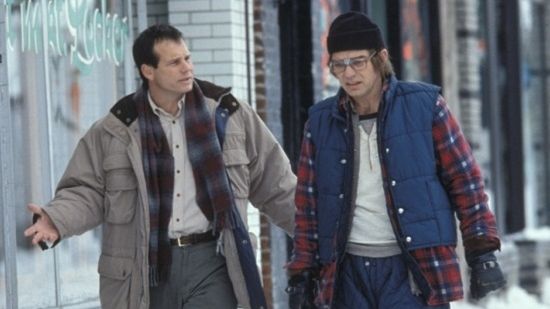
In 1998, director Sam Raimi put aside his signature frenetic stylings to make A Simple Plan, an adaptation of novelist/screenwriter Scott B. Smith’s 1993 thriller about three working-class men who end up stumbling upon a crashed plane filled with millions of dollars in cash. Seeing this as the answer to their financial woes, the men divvy up the money only to quickly find their close-knit group torn apart by greed and paranoia. While not ostensibly film noir in its construction, the story nevertheless touches upon classic noir themes—namely, the corruptive power of greed and the folly of man in attempting to control life’s chaos. Whatever its designation, the film presents an absorbing, if unmistakably devastating, modern-day morality tale. —Mark Rozeman
97. CroupierDirector: Mike Hodges
Year: 1998
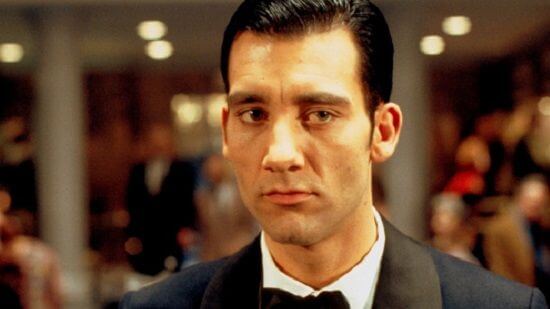
Get Carter director Mike Hodges’s last great film was budding star Clive Owen’s first. In fact, even now, Croupier may be the best thing Owen has ever done, playing a struggling novelist who takes a job at a casino, looking for inspiration but finding mostly trouble. Watch this film now to be reminded where the actor first prompted speculation that he’d make a great James Bond: His character Jack Manfred isn’t a super-spy, but he’s got the jet-black suaveness, lady-killing panache and dry wit we associate with 007. Croupier is a movie attracted to the sleazier side of life, and Owen’s antihero was the perfect tour guide. —Tim Grierson
96. After Dark, My SweetDirector: James Foley
Year: 1990
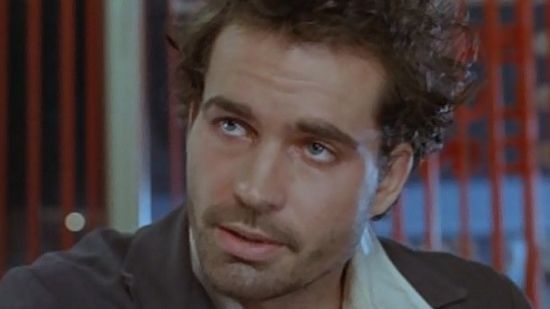
Among James Foley’s (Glengarry Glen Ross, House of Cards) early career successes was this under-the-radar mood piece, a neo-noir adaptation of hard-boiled provocateur Jim Thompson’s 1955 novella. Jason Patric stars as soft-spoken former boxer “Collie” Collins, who escapes the loony bin only to fall under the spell of boozing widow Fay (Rachel Ward). Drifter and femme fatale are soon entangled in a doomed kidnapping plot devised by her sketchy ex-cop acquaintance “Uncle Bud” (a pitch-perfect Bruce Dern). That there winds up being a diabetic child involved offers no spoiler; we know these lost, spent souls are going to rot in the Palm Springs sun—it’s simply a matter of when. Even Fay’s mid-century mod ranch house, what should be an Architectural Digest spread, is instead an ode to emptiness and general disrepair. As is characteristic of Thompson’s work, the conflict here is largely in the mind, and Patric’s measured performance is mesmerizing. His slack-jawed, dead-eyed antihero leads with a deceptively well-mannered façade whose voiceovers reveal a quiet, terrifying nihilism. —A.S.
95. Angel FaceDirector: Otto Preminger
Year: 1953
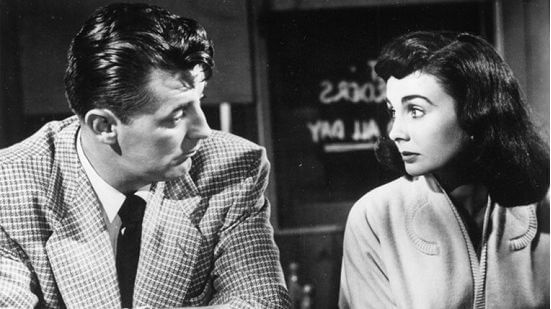
Some noirs get their hooks into you within their first few minutes and don’t let go even after the credits roll. Angel Face isn’t one of those. It’s a deliberate, considerate film, one that has a destination in mind and makes no bones about taking its time getting there. Whether you ride with it is up to you, but come on: This is Otto Preminger—lesser Otto Preminger, perhaps, certainly not one of his better celebrated films. Even lesser Preminger is worth your time, though, particularly when he’s as laser-focused as he is here. Angel Face builds. It’s a movie that constantly sets itself up and points toward its shocker of a climax. Preminger’s direction renders this story of crazy love, shared between Robert Mitchum and Jean Simmons, unpredictable if slow. Don’t let the apparent languidness get in your way. The unhurried pace adds to the film’s grimmer pleasures. —Andy Crump
94. The GriftersDirector: Stephen Frears
Year: 1990
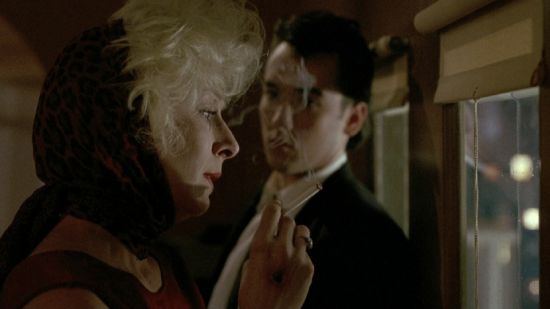
British director Stephen Frears does a marvelous job of adapting one of the toughest hard-boiled nuts to crack, mid-1900s novelist Jim Thompson, in this pulpy oedipal neo-noir. John Cusack sheds the last remnants of his Say Anything teen-star sincerity as Roy Dillon, a slick but stupid young con artist. He thinks he’s smarter than chemical blonde mom Angelica Huston, an odds fixer at the track who oozes calculation with every utterance of “Los ANG-guh-LEEZ,” and hustling girlfriend Annette Bening, a newer version of dear old mum on the hunt for her own long game. The shitshow of Freudian damage and deception, penned for the screen by Donald E. Westlake, is unsettling even by Thompson standards. Frears and his core triangle of actors—restrained but revelatory, all—keep the one-upsmanship taut, the better to let Thompson’s subversive, straight-up HAM gender dynamics and festering worldview have their way. (Pat Hingle, Stephen Tobolowsky and the late, great J.T. Walsh are other casting masterstrokes.) You can almost smell the putrid yellows and browns of Roy’s apartment—with its too-obvious clown paintings—and L.A. at large. When trouble is a gut punch—or an unwanted child, pick your stomach ill—you know things aren’t gonna end well. —A.S.
93. The Naked CityDirector: Jules Dassin
Year: 1948
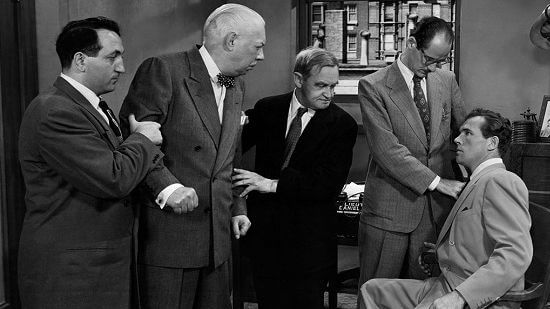
Placed next to the rest of his filmography, Jules Dassin’s The Naked City feels somewhat rote. If you’ve ever watched a single episode of Law and Order, or if you have a distinct fondness for procedural fare at large, then you really owe a debt of thanks to Dassin’s stripped-down work here. Unlike so many other noirs, The Naked City aims for realism over stylish melodrama. That verisimilitude has kept the film from aging well, but Dassin’s commitment to authenticity lends a great deal of heft to his story of brute violence in New York City, even if the plot runs pretty much by the numbers. That’s sort of the point, of course: to showcase the way that law operates in service to justice. The results might be flat, but their influence and dedication to purity call for our acknowledgement. —A.C.
92. State of GraceDirector: Phil Joanou
Year: 1990

Phil Joanou’s State of Grace had the great misfortune to hit theaters the same month as Martin Scorsese’s Goodfellas. Talk about rough luck. Maybe Joanou’s work will be rediscovered someday in the future as people dig back through the ’90s to uncover hidden gems of the era; it’s certainly worthy of reevaluation. State of Grace does a lot of things well, and mostly suffers from “wrong place, wrong time” syndrome. Like Scorsese, Joanou peels back the layers of mob tropes, dissecting gang heavies in an effort to see what kind of people they are beneath the surface. Better still, he’s able to drive right at the heart of urban crime through portraits of the intercultural beefs that drive it. The cast is terrific—you can hardly go wrong with Sean Penn, Gary Oldman, Ed Harris and Robin Wright, let alone John Turturro and John C. Reilly—but it’s what Joanou does with them that makes State of Grace special. —A.C.
91. Devil in a Blue DressDirector: Carl Franklin
Year: 1995
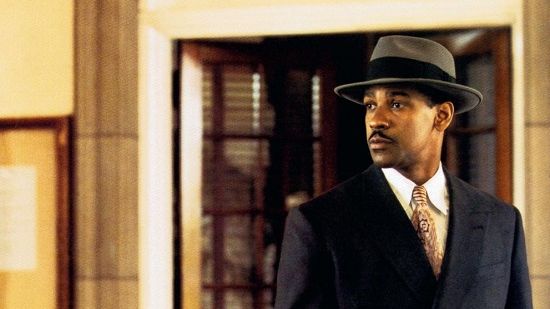
Devil in a Blue Dress perfectly casts Denzel Washington as a down-on-his-luck WWII veteran who relocates to L.A. to start a new career as a private investigator. As tends to happen with PIs in this subgenre, the man inevitably finds himself embroiled in a complicated murder investigation. Adding his own spin to the well-trodden noir plotlines, writer/director Carl Franklin uses his film’s detective story as a launching pad to explore the racial landscape of 1940s America. Philip Marlowe certainly had his share of rough encounters, but he had the benefit of never being instantly judged on the basis of his skin color. Mix in a scene-stealing turn from Don Cheadle and Devil in a Blue Dress makes for one tantalizing riff on the film noir formula. —M.R.
90. Kiss of DeathDirector: Henry Hathaway
Year: 1947
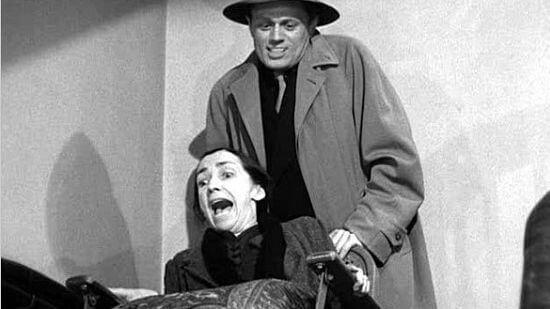
Does any psychopath in film noir’s rogues gallery strike quite as much immediate, stomach-churning terror as Tommy Udo? The man’s got a leering, sunken visage only a mother could love, provided she keeps her eyes closed tightly and doesn’t give him reason to shove her down the stairs. Richard Widmark’s wolf grin might be the only thing about Kiss of Death that matters. Bereft of him, of course, Henry Hathaway’s film remains solid, but Widmark’s Oscar-nominated performance makes the entire enterprise feel vital. He’s a villain for the ages, perhaps robbed of his due by Hathaway’s need to architect a happy ending. Such is life working with production codes. —A.C.
89. The Usual SuspectsDirector: Bryan Singer
Year: 1995
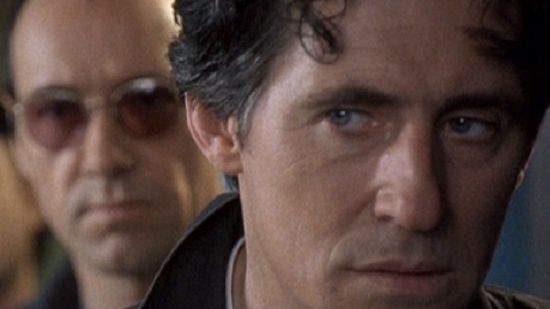
The movie is a cheat and a fraud. It’s as manipulative as it is dishonest, but unlike many other far lesser films worthy of the same description, all this flick’s shamelessness is on purpose. When it was released The Usual Suspects left viewers gob smacked, staring at screens with expressions matching Michael Caine and Steve Martin on the runway at the end of Dirty Rotten Scoundrels: at first confused, then maybe a little angry, but then ultimately delighted by how fooled they’d just been. Perfectly paced, brilliantly scored by director Bryan Singer and editor/composer John Ottman—the film never lets the marks know they’re being conned by the irresistible ensemble or Christopher McQuarrie’s dark, mischievous script. And then like that … it’s gone… —Bennett Webber
88. Black WidowDirector: Bob Rafelson
Year: 1987

Taking the femme fatale conceit to literal extremes, director Bob Rafelson, whose credits include Five Easy Pieces and the 1981 remake of The Postman Always Rings Twice, delivers a modern noir elevated by two ace lead performances. Debra Winger does Debra Winger as an FBI agent, Alex, who grows obsessed with the perpetrator of a series of unsolved marriages-then-murders. Theresa Russell matches her note for note as gold-digging vixen Catharine, who’s as good at the long con as she is a cat-and-mouse game with Winger’s humdrum suit. Then there’s the staggering amount of research involved—Catharine on the passions of her soon-to-be victims, Alex on her suspect. It’s smart, with pointed gender commentary to boot. The plain-Jane Fed plays frenemies with the glamorous chameleon while cinematography great Conrad L. Hall (Cool Hand Luke, American Beauty) mines suspense in the shadows, all the better to spotlight Russell’s steely eyes and porcelain veneer—she’s bone-chilling. Bonus points for a droll cameo from Dennis Hopper as one of Catharine’s marks, and a lecherously long-nailed Diane Ladd as one of his relatives. —A.S.
87. Dark CityDirector: Alex Proyas
Year: 1998
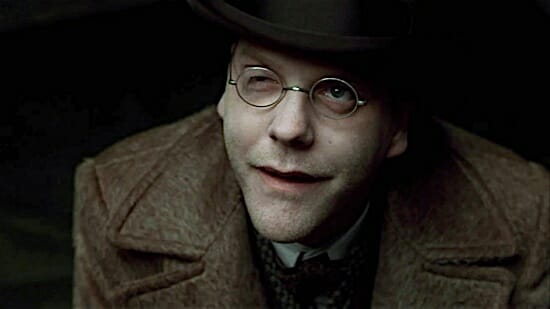
Taking a cue from Blade Runner, Alex Proyas’ 1998 magnum opus serves up a cerebral sci-fi extravaganza as filtered through the visual tropes of film noir and German Expressionism. The result is a staggering achievement in imagination that, like Blade Runner, flopped at the box office only to be revived later as a beloved cult classic. The film casts Rufus Swell as an amnesiac who wakes up one night to discover that his city is (quite literally) being manipulated by a band of mysteriously pale men in jet-black trench coats and fedoras. Along for the ride is Kiefer Sutherland as a crazed scientist and Jennifer Connelly as our hero’s estranged wife (who, it must be noted, was born to play a noir femme fatale). —M.R.
86. GaslightDirector: George Cukor
Year: 1944
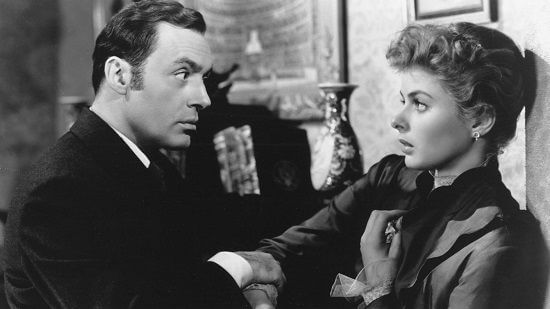
Ingrid Bergman won her first Oscar for playing a vulnerable young woman slowly being driven insane by her charismatic husband in Gaslight. And while certainly well earned, Bergman’s award-winning portrayal is but one reason to catch this exceptional 1944 psychological thriller. For one, unlike other noirs, Gaslight is a period story, set in the Edwardian era, and reiterates the frightening notion that evil can emerge not just from the corrupt city setting inherent to the genre but from a domestic context, as well. As the film’s villain, Charles Boyer delivers a hypnotic, chilling performance that perfectly matches Bergman’s volatile characterization. If all that weren’t enough, Murder, She Wrote fans will be delighted at the feature film debut of an 18-year-old Angela Lansbury. —M.R.
85. ObsessionDirector: Edward Dmytryk
Year: 1949

Unlike so many of its peers on this listing, Edward Dmytryk’s Obsession doesn’t lean on violence in its plotting and scheming. But the film isn’t gentle by any stretch. In fact, Obsession is one of the more gruesome classic noirs, a slow-burning bit of nastiness that could give Breaking Bad a run for its money in the body disposal department. Dmytryk rides on the strength of great work by Robert Newton, here playing a psychiatrist who determines to kill his wife’s lover, an American diplomat played by Phil Brown. (Obviously, because everybody knows that all psychiatrists secretly harbor homicidal urges.) Newton’s a creepy hoot, and Dmytryk has such a good handle on his suspense that even the tonal dissonance of unwelcome comedy doesn’t break the film’s insidious spell. —A.C.
84. Se7enDirector: David Fincher
Year: 1995

It’s hard to think of a movie that did more short-term damage to the length of your fingernails in the ’90s than David Fincher’s Se7en. The film follows detectives David Mills (Brad Pitt) and almost-retired William Somerset (Morgan Freeman) on the trail of John Doe, a murderer who plans his kills around the seven deadly sins. We see Somerset teach a still-naive Mills valuable life lessons around the case, which has morally charged outcomes aimed at victims that include a gluttonous man and a greedy attorney. But with all the disturbing crime scenes considered, Se7en’s never as unpredictable or emotionally draining as when Mills and Somerset make the final discovery of “what’s in the box” after capturing their man. —Tyler Kane
83. TensionDirector: John Berry
Year: 1949
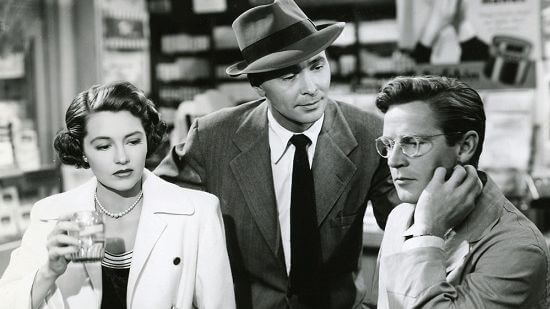
One of film noir’s more under-loved minor works, Tension showcases great work by Audrey Totter while fiddling with gender roles and postwar disenchantment. There are few saps as sappy as Richard Basehart’s cuckolded Warren Quimby, and even in the realm of femme fatales, few are even half as downright mean as Claire Quimby (Phyllis Dietrichson, Lily Carver and Brigid O’Shaughnessy notwithstanding). Forget the fact she habitually cheats on poor borin’ Warren: Check the scene where he drives her to the house he scrimped and saved for, a gesture she can only respond to with contempt. Totter is such a hoot you almost forget to feel bad for Basehart, but even his gentle male ego can only endure so much abuse before he decides to remake himself in the image of Claire’s “type,” all the better to get even with her and her lover. Tension might not have the iconography of John Berry’s peers, but the film makes a worthy study of masculine American identity. —A.C.
82. King of New YorkDirector: Abel Ferrara
Year: 1990
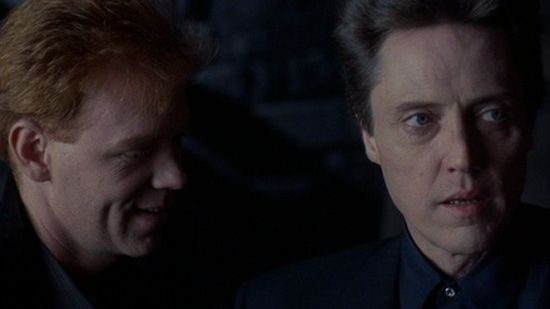
Abel Ferrara’s modern day take on Robin Hood transposes the crusader of the common man to the scum-infested streets of the Big Apple, where Christopher Walken’s formerly incarcerated drug lord Frank White returns to his old stomping ground. His strategy for social (and personal) reform: Eliminate competing kingpins and their rackets, and channel profits to the lower classes while funding a hospital in the South Bronx. A win/win, albeit a perverted one, right? Except that we know better. When the cops (David Caruso and Wesley Snipes among them) are just as morally flexible as the crooks (as Walken’s associate, “Larry” Fishburne is unhinged), none of these figures on the margins are going to wind up any closer to a fighting chance. As unapologetic judge and jury, Walken is never better, nor cooler: “I must’ve been away too long because my feelings are dead. I feel no remorse,” he states flatly. B-movie vet Ferrara (Ms .45, China Girl) revels in the extremes in textures, juxtaposing the inner city guts and grime with the blinged-out glamour of White’s penthouse lifestyle—this gangster film wound up a gangsta touchstone for ’90s hip-hop. King of New York’s standing on this list could arguably be swapped with Ferrara’s even more corrosive follow-up two years later, Bad Lieutenant, another pitch-black fable about attempts at redemption gone spectacularly awry—it’s hardly surprising that, exceptional as Harvey Keitel was in the 1992 film, the lead role was originally intended for Walken. —A.S.
81. OldboyDirector: Park Chan-wook
Year: 2003
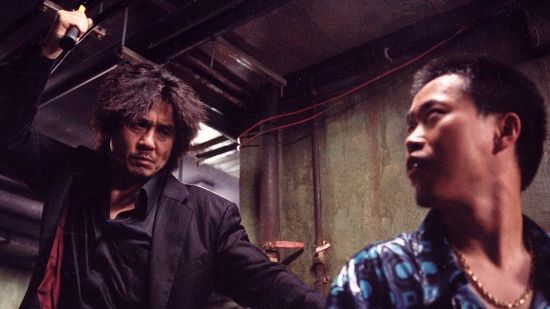
Park Chan-wook’s Oldboy makes the smart choice most genre homages don’t: The film relegates reference to the soundtrack titles, some of which crop up elsewhere on this very list. It takes more than a few hat tips to Tourneur, Hawks and Ray to make a noir, but Oldboy boasts the lion’s share of noir’s best trappings in its story of long-term revenge and dirty family secrets. The film is probably best revered for a single fight scene, one of only a handful to occur throughout its two-hour running time. Admittedly, that hallway scrap is pretty glorious, but Park boils his protagonist hard, and spoken from beneath star Choi Min-sik’s grizzled mane, the film’s dialogue crackles with beefy, unhinged ennui. Years from now when the next big international neo-noir import arrives stateside, don’t be surprised if you see Oldboy’s moniker on its OST. —A.C.
80. BoundDirector: Lilly and Lana Wachowski
Year: 1996
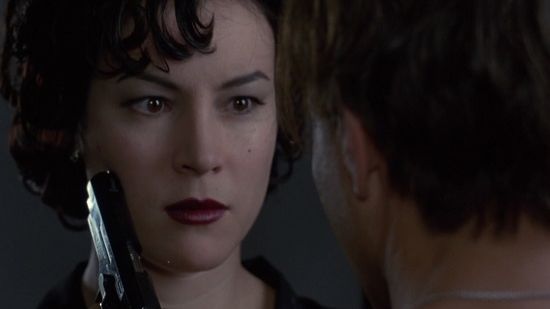
Before The Matrix launched them into blockbuster superstardom, Lilly and Lana Wachowski announced their arrival with this sleek, sexy neo-noir. The film centers on Corky, a female ex-con who ends up falling into a sexual relationship with her next-door neighbor, Violet. The two promptly hatch a plan to run off together after stealing money from Violet’s mafia-affiliated husband. Predictably, this seemingly straightforward plan goes dangerously awry. There’s much to love about Bound—from Gina Gershon’s and Jennifer Tilly’s career-defining performances to Bill Pope’s stylish cinematography to the progressive portrayal of a lesbian relationship. In the end, however, Bound delights because, well, it’s just so darn entertaining. Its success provides all the more evidence that, in the wake of Jupiter Ascending, the Wachowskis might do well to get back to their low-budget roots. —M.R.
79. The Asphalt JungleDirector: John Huston
Year: 1950
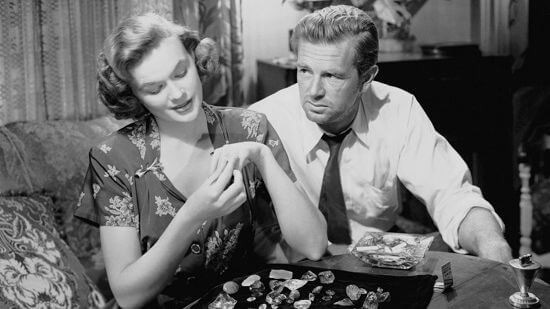
An artfully staged robbery sequence is among the highlights of John Huston’s heist classic, an obvious blueprint for films spanning Ocean’s 11 to Reservoir Dogs. What marks it firmly in the noir realm, though, is a censors-baiting taste for the bleak and merciless, a thread of self-loathing amid the double-crosses, and an urban wasteland motif that gets even more suffocating when the underworld rises. Fresh out of the clink, criminal mastermind Doc Reidenschneider (Oscar nominee Sam Jaffe) assembles a crew of irredeemable lowlifes to break into a jewelry store vault. (Fun fact: The Coen Brothers paid homage in their 2001 noir The Man Who Wasn’t There with Tony Shalhoub’s character, Freddy Riedenschneider.) Among Jaffe’s cohorts are Sterling Hayden (well more than a decade before Dr. Strangelove and 20 years before The Godfather) as small-time crook Dix, Louis Calhern as a corrupt lawyer-turned-the group’s fence Emmerich and, as the latter’s mistress, a then-fledgling and essentially unknown actress by the name of Marilyn Monroe. Huston eschewed some of the genre’s flourishes for a more naturalistic approach, keeping musical cues to a bare minimum and detailing the procedural minutia of the break. The dialogue, peppered with slang, is both crackling and realistic. Story has it that MGM chief Louis B. Mayer said, “That ‘Asphalt Pavement’ thing is full of nasty, ugly people doing nasty things. I wouldn’t walk across the room to see a thing like that.” Don’t listen to him. —A.S.
78. DriveDirector: Nicolas Winding Refn
Year: 2011

Of the pivotal elevator kiss toward the end of Drive, Ryan Gosling has said it’s the moment before his nameless driver becomes the werewolf. But there are several points of no return, and genres, in Nicolas Winding Refn’s thriller, from action flick to superhero to grindhouse B-movie. Its roots are unmistakably noir, however, specifically that L.A. subset of sprawling asphalt, actors, and the false appearances and loneliness therein. Gosling’s Hollywood stuntman by day, getaway driver by night is part of an age-old tradition of antiheroes who want to do the right thing but can’t put down the monster within. It’s violent, romantic and quintessentially noir. Framed by a retro sheen of neons and ’80s synths, Drive transports the genre to the present day with a supporting cast that includes a menacing Albert Brooks, Carey Mulligan, Ron Perlman, Bryan Cranston and Christina Hendricks. —A.S.
77. The ProwlerDirector: Joseph Losey
Year: 1951

Of all the films collected on this list that aren’t directed by Alfred Hitchcock, Joseph Losey’s The Prowler comes closest to feeling truly Hitchcockian. It’s morbid and nasty, the kind of feature that feels spun from the cloth of pulp comics; you can see this being a really good episode of Tales From the Crypt in an alternate timeline, though we’re probably better off here, because Losey’s movie is phenomenally macabre. What happens when obsession takes a hold of you? What happens when you slowly begin to wither and morph into the worst version of yourself, all to obtain the good things in life you arrogantly believe you deserve? In The Prowler, Van Heflin’s covetous, murderous cop is undone by his own scheming, all in the pursuit of getting what’s his. There’s a life lesson in there about greed, but you might be too caught up in the film’s sweaty, grimy sheen for it to sink in. —A.C.
76. Lady in the LakeDirector: Robert Montgomery
Year: 1947

Forty years before The Blair Witch Project popularized the idea of a film being told from the camera’s perspective, actor/director Robert Montgomery gave this radical idea a spin with Lady in the Lake, his adaptation of one of Raymond Chandler’s Philip Marlowe detective stories. Ultimately, the case proves to be minor Marlowe and the first-person gimmick does eventually wear thin over the course of the film’s runtime. Putting aside these reservations, however, the film is most certainly worth a watch if just to witness Montgomery’s sheer audacity and inventiveness. It’s the textbook example of a film being ahead of its time. —M.R.
75. MementoDirector: Christopher Nolan
Year: 2000

During a brutal attack in which he believes his wife was raped and murdered, insurance-fraud investigator Leonard Shelby (played with unequivocal intensity, frustration and panic by Guy Pearce) suffers head trauma so severe it leads to his inability to retain new memories for more than a few minutes. This device allows Christopher Nolan to brilliantly deconstruct traditional cinematic storytelling, toggling between chronological black-and-white vignettes and full-color five-minute segments that unfold in reverse order while Shelby frantically searches for his wife’s killer. The film is jarring, inventive and adventurous, and the payoff is every bit worth the mind-bending descent into madness. —Steve LaBate
74. D.O.A.Director: Rudolf Maté
Year: 1950
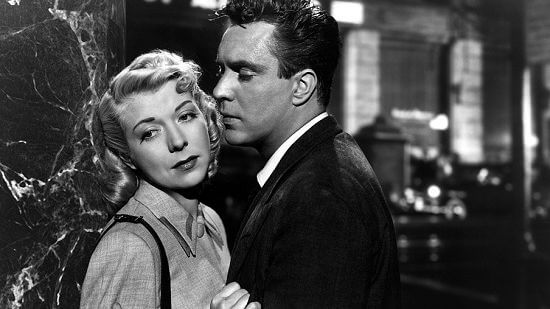
In one of the most intriguing opening scenes in film history, D.O.A. commences with a lengthy tracking shot of a man as he stumbles into the police office to make an unusual request—he wants to report his own murder. This opening image just about sums up D.O.A., a brisk yet exhilarating noir thriller with one hell of a high-concept. After being administered a deadly poison, the main character has only a few days to discover who dosed him and why. What follows is a glorious mix of high-stakes melodrama and entertaining sleaze all compacted into a concise hour-and-twenty minute running time. —M.R.
73. DetourDirector: Edgar G. Ulmer
Year: 1945
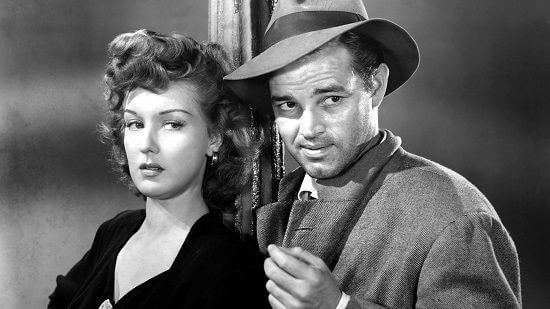
A pioneering work in the film noir movement, Detour was initially conceived as little more than yet another quickie product straight from Hollywood’s poverty row. The story concerns a piano player who, while hitchhiking from New York to Hollywood, ends up getting a ride from a pill-popping bookie who later turns up dead. Thus begins a series of bad decisions that provides the template for any good noir yarn. Filmed in less than a month with a miniscule budget, the eventual theatrical cut barely clocked in over an hour. It was from these severe limitations, however, that the vocabulary of down-and-dirty noir films began to take shape. Indeed, Detour’s ragged edges and technical hiccups helped inadvertently create the kind of grimy, hard-boiled atmosphere that served as the perfect reflection of its equally gritty content. —M.R.
72. ZodiacDirector: David Fincher
Year: 2007
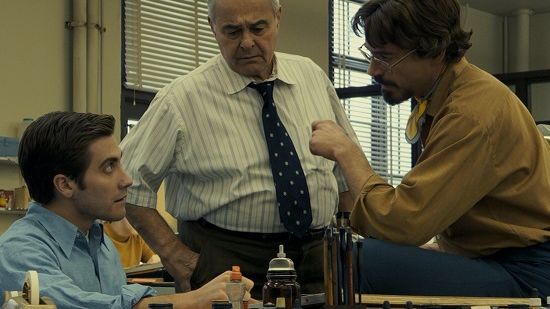
I hate to use the word “meandering,” because it sounds like an insult, but David Fincher’s 2007 thriller is meandering in the best possible way—it’s a detective story about a hunt for a serial killer that weaves its way into and out of seemingly hundreds of different milieus, ratcheting up the tension all the while. Jake Gyllenhaal is terrific, and the story is content to release its clues slowly, leaving the viewer in ambiguity for long stretches, while still feeling like a fast-paced burner. It’s not Fincher’s most famous film, but it’s absolutely one of the most underrated thrillers since 2000. —Shane Ryan
71. Key LargoDirector: John Huston
Year: 1948
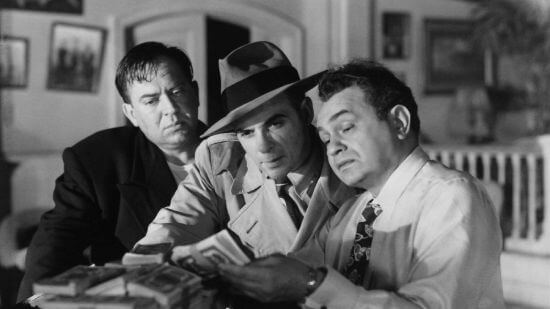
The fourth and final film teaming of Humphrey Bogart and Lauren Bacall doesn’t rank with their other onscreen pairings—the real dance here is between Bogie, as a returning veteran, and Edward G. Robinson, as a gangster who has Bogie’s war buddy’s island resort in a stranglehold, just in time for a hurricane to make landfall. Adapted from Maxwell Anderson’s hit Broadway play, the resulting chamber piece swaps the Spanish Civil War for the second World War. Also exchanged are the typical noir streets for Florida’s coastal environs, every bit as claustrophobic and oppressive as the barometric pressure drops. Though only the film’s opening scenes were shot on location (the rest on the Warner Bros. lot), the exotic setting and meteorological fate render isolation to an extreme degree. Robinson is electrifying as the ex-bootlegger, whose hostages include John Barrymore as the wheelchair-bound father of Bogart’s deceased war colleague, Bacall as the soldier’s widow, and Academy-Award winner Claire Trevor as Robinson’s mistreated moll. As with Bacall here, it’s not Bogart’s finest collaboration with director John Huston, but the palpable sense of atmospheric dread and postwar disillusionment make this a trip worth taking. —A.S.
70. The Sound of FuryDirector: Cy Enfield
Year: 1950
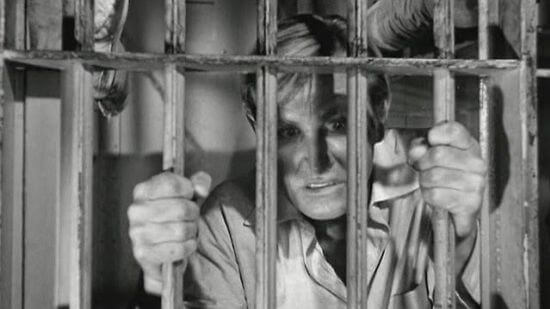
Social consciousness, a recurring theme throughout noir’s history, meets with the grisly side of mob politics in Cy Endfield’s lesser-known yarn, ripped straight from the headlines. Like The Wrong Man, The Sound of Fury purports to be based on actual events. How well the film plays that out depends on your knowledge of the case that inspired it. In Endfield’s hands, the story becomes a discomfiting exploration of American inclinations toward taking matters into one’s own hands. Unlike so many legit bad guys on this list, Frank Lovejoy’s Howard Tyler does bad things for good reasons. He’s a family man fallen on hard times. Endfield makes the case for his guilt, but through the complex worldview of noir he’s able to critique the lack of cultural empathy (alongside socially irresponsible journalism) that ushers him toward a downfall disproportionate to his crime. What the film lacks in stylishness, it makes up for in raw emotion. —A.C.
69. BrickDirector: Rian Johnson
Year: 2005
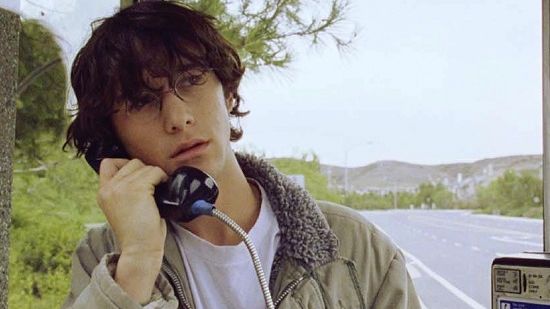
High-school sleuths are popular on TV—Veronica Mars, Buffy the Vampire Slayer, and The Hardy Boys, to name a few. Social cliques and hormonal tensions coupled with deceptively blasé suburban backdrops tend to refresh gumshoe maneuvers, even as murderous intrigue adds zap to all the Clearasil melodrama. But Brick, director Rian Johnson’s crackling debut, shakes up a genre that’s grown a bit routine, while indulging our familiarity with it. Joseph Gordon-Levitt plays Brendan, the smart, loner kid whose broken heart leads him to the local teenage underworld when his ex-girlfriend (Lost’s Emilie de Ravin) goes missing. The extremely mannered dialogue evokes the clipped lingo of Philip Marlowe, cross-wired with David Mamet. Southern California kids who look like they should be in line for a Gwen Stefani show drop slang like “duck soup” (easy pickings) and “bulls” (cops) as if they were studying James Ellroy in English class. Like those punches that lunge across the screen and send Brendan reeling toward his next clue, it’s a left-field surprise. —Steve Dollar
68. Force of EvilDirector: Abraham Polonsky
Year: 1948
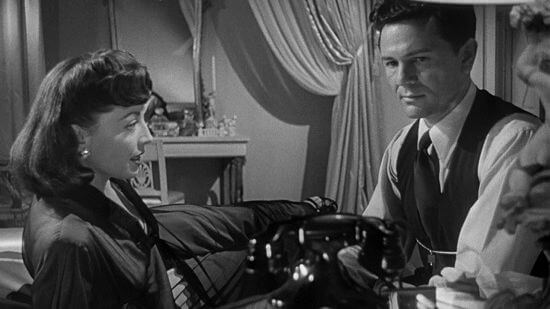
A favorite of Martin Scorsese, Force of Evil centers on a lawyer who finds himself involved with an influential gangster looking to take over all smaller rackets in town. The problem? One of those desirable rackets is run by the lawyer’s older brother. Like T-Men, the film makes great use of shooting on location. Moreover, at times, the film’s familial themes and stylized writing help elevate the conflict to near Shakespearean levels (or Biblical levels, considering how frequently it alludes to the story of Cain and Abel). Though relatively small in scale, Force of Evil finds greatness in its aim to convey grandiose, large-scale ideas. —M.R.
67. Angels With Dirty FacesDirector: Michael Curtiz
Year: 1938

Jimmy Cagney, Pat O’Brien, and Humphrey Bogart star in this early entry in the noir canon, a surprisingly restrained morality play about two childhood friends whose lives take different yet intersecting paths (natch). During their youthful delinquent days in Hell’s Kitchen, Cagney’s Rocky took the rap for a railroad car robbery after saving the life of his pal Jerry (O’Brien), who subsequently got away—he “couldn’t run as fast as I could,” Jerry laments guiltily. Years later, Rocky is out of juvey and back into crime—along with his new associate, lawyer/heavy Bogart—while Jerry has become a man of the cloth. The priest is doing his best to discourage the neighborhood’s street kids, a.k.a. the “Dead End Kids” and “Bowery Boys” of several film series, to learn from his mistakes. Instead, the fledgling hoodlums idolize Father Jerry’s former BFF, who eats up the attention. What distinguishes Angels With Dirty Faces from its earlier, clear-cut gangster peers (e.g., The Public Enemy) is an emotional, redemptive thread, along with the focus on forces, both internal and external, upon the characters’ fates. A social conscience and introspection elevate what in lesser hands than Michael Curtiz’s would be a contrived melodrama. That, and a smartly paced production led by performances from O’Brien and, particularly Cagney, whose charismatic turn—check that up-for-interpretation climactic reckoning—landed him his first Best Actor Oscar nomination. —A.S.
66. T-MenDirector: Anthony Mann
Year: 1947

Prior to gaining his reputation as a premier Western filmmaker, director Anthony Mann established his name in Hollywood via several low-budget noir productions. One of his most widely celebrated is T-Men, which centers on two Treasury agents who must go undercover to infiltrate a notorious counterfeiting ring. While not boasting any big-name actors or even a particularly novel story, the film is noted for its inventive cinematography, with Mann and cinematographer John Alton deciding to shoot several scenes on location in Detroit and Los Angeles, thus necessitating some creative uses of lighting. This commitment to realism would help perfect the film noir style we all know and love. —M.R.
65. Kiss Kiss Bang BangDirector: Shane Black
Year: 2005
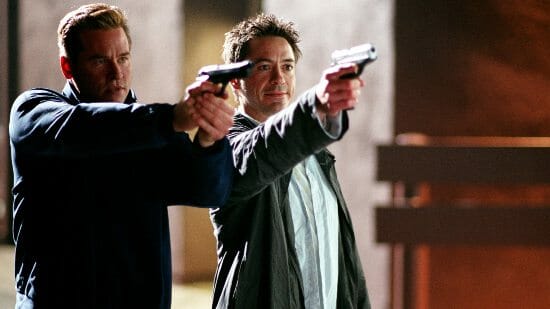
Shane Black’s Kiss Kiss Bang Bang isn’t just one of the early stops on Robert Downey Jr.’s early aughts career redemption tour: It’s arguably the strongest American neo-noir produced in postmillennial cinema. You don’t need to know the Philip Marlowes, the Billy Wilders, the Robert Siodmaks or the Sam Spades of noir canon to have a blast with this one. You only need to have a sense of humor and an appreciation of snappy dialogue, courtesy of a smirking, self-aware script that’s as snarky about its own tropes and contrivances as it is infinitely quotable. The basic foundation of the noir is all there, from the equal doses of gunplay and wordplay to the grisly whodunit driving the plot’s mounting pile of incidents forward. But Black, Downey, and a supporting cast that includes Michelle Monaghan and a rarely better Val Kilmer make the familiar structure here feel new by giving it a coat of fresh, modern vibrancy. —A.C.
64. Sweet Smell of SuccessDirector: Alexander Mackendrick
Year: 1957
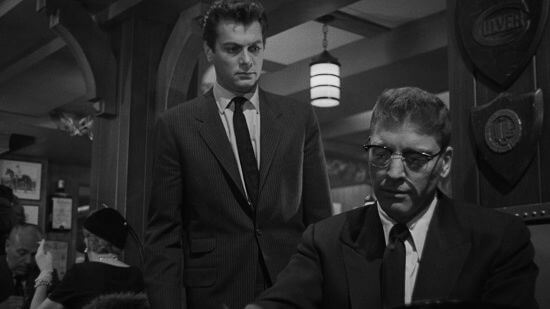
They don’t come much seamier than Alexander Mackendrick’s masterpiece of blind items and blind ambition. NYC gossip columnist J.J. Hunsecker (Burt Lancaster) commands fear from politicians and celebs as he holds court in the social scene. Among his subjects is suck-up Sidney Falco (Tony Curtis); he’s a hustling publicist who’ll do anything to get in Hunsecker’s good graces, even if it means setting up the musician beau of Hunsecker’s younger sister as a pot-smoking commie. Witch-hunt or blackmail, scruples be damned. It’s a round of the nastiest poison for everyone here—from the newspaper giant’s thinly veiled feelings for his sis to a cop in Hunsecker’s pocket to Falco’s pimping out of his girlfriend to advance his agenda. James Wong Howe’s stark yet lyrical cinematography, Ernest Lehman and Clifford Odets’ fast-paced dialogue (adapted from Lehman’s novella), and most explicitly, Elmer Bernstein’s iconic score exemplify what would become known as “crime jazz”—whose gritty brand of urban cool was dangerous, sexy and unforgiving. Sweet Smell of Success pops as a ruthless portrait of New York nightlife and its creatures, and an eerily prescient nod to media sensationalism more than a half century before Facebook and Twitter. Then again, maybe it’s just as canny as everything else at play here. —A.S.
63. FargoDirector: Joel and Ethan Coen
Year: 1996
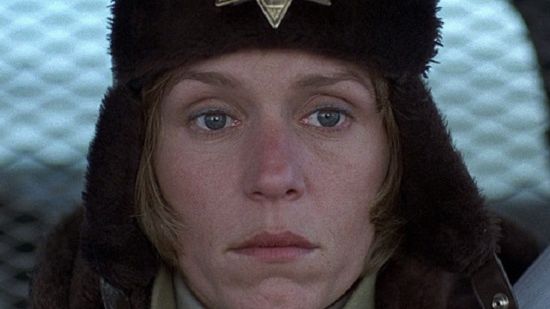
Having already made the more traditional neo-noir with their debut feature, Blood Simple (No. 37), the Coen Brothers opted for a more subversive take with Fargo. The story involves a mild-mannered car salesman who hires two men to kidnap his wife. His hope is that her father’s ransom money can be put toward fixing some of his cash-flow issues. Of course, the situation quickly sours and local police chief Marge Gunderson (a perfect Frances McDormand), who just happens to be heavily pregnant, is brought in to investigate. Trading in the subgenre’s traditional shadow-drenched imagery in favor of wide expanses of the snow-coated Midwest landscapes, the Coens take a conventional noir set-up (a simple plan gone horribly wrong), place it in an unorthodox setting and coat the proceedings under a layer of Midwestern politeness. The result is a devilishly clever black comedy that proved to be the Coens’ mainstream breakout, earning both them and McDormand Academy Awards for writing and acting, respectively. —M.R.
62. The LimeyDirector: Steven Soderbergh
Year: 1999
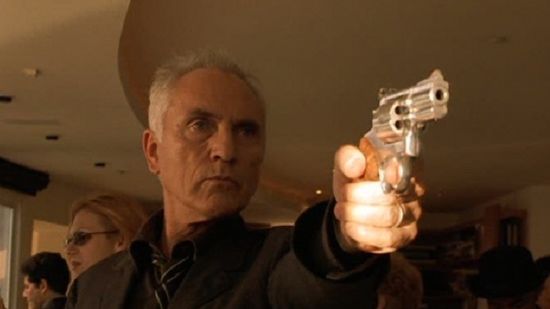
Bad deeds and worse parenthood catch up to Terence Stamp’s Cockney-rhyming antihero, an Englishman in L.A. searching for answers about his daughter’s “accidental” death. Recently released from prison after a decade-long stint, Wilson (Stamp) suspects the young woman’s boyfriend, a record producer of his own age (played with nonchalant skeeze by Peter Fonda) whom he discovers has a drug business on the side. What ensues is an unsettling retread of oedipal dynamics and tragedy repeating itself, the double-crosses and retribution told via flashbacks, and made more vivid by some inspired audio manipulation. The effect calls to mind what Steven Soderbergh did in Out of Sight a year earlier, but here editor Sarah Flack tweaks the motif more (in)consistently and dramatically, excerpting both dialogue and background details at seemingly disjointed moments in the narrative’s timeline. It disorients while bringing plot points and mood into sharp focus. Ed Lachman’s cinematography is likewise inventive. Stamp is simply badass, whether he’s crashing Fonda’s cantilevered Hollywood Hills manse party or having the last word with thugs. Wilson is a righteous avenger who’s resigned to his screwups and what they’ve cost him. That Soderbergh winks at Stamp’s and Fonda’s onscreen legacies ups the psychological ante of players who know the glory days are behind them—“someplace far away, half-remembered,” as Fonda’s character puts it. The Limey is stylish and hip as all get-out, but also more than a little sad. —A.S.
61. Red Rock WestDirector: John Dahl
Year: 1993

A key figure in the neo-noir renaissance of the early ’90s, John Dahl followed his promising if not-quite-there directorial debut Kill Me Again with the one-two punch of Red Rock West and, a year later, The Last Seduction (No. 55). For its part, Red Rock West is a classic pulp throwback, scripted by Dahl and his brother Rick. Nicolas Cage, all denim-and-drawl in a tailor-made role if ever there were one, plays a Marine-turned-homeless drifter who stumbles into the eponymous Wyoming town, and into a murder plot. Mistaken for a hitman by the hiring party (J.T. Walsh), he passes himself off as the assassin until he makes the acquaintance of his lovely target (Lara Flynn Boyle), and the real killer (Dennis Hopper). The list of plot twists grows long as the late-afternoon shadows, each double-cross bathed in a gorgeous wash of sun and aided by a twangy soundtrack. (Dwight Yoakam, who wrote a song for the film, shows up as a truck driver.) Red Rock West is terrific fun. It’s a confident, authentic entry in the modern canon that feels neither ironic nor like it’s trying too hard. —A.S.
60. The VerdictDirector: Don Siegel
Year: 1946
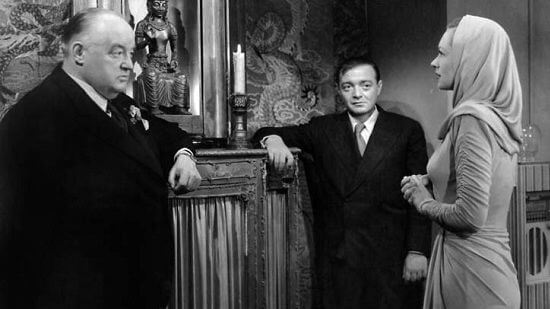
Don Siegel’s debut picture, The Verdict rests between two axes: Peter Lorre and Sydney Greenstreet. Siegel could have shot the film and styled his misé en scene any way he wanted, and none of it would have mattered so long as he kept his two leading men on the cast. The Verdict is all about them, both from the perspective of narrative and in terms of the viewing experience. Lorre has a habit of stealing our attention while hanging out at the edges of the frame, while Greenstreet uses his imposing bulk to command from the center of the camera. They make a fun pair as antiheroes trying to redeem Greenstreet’s disgraced Scotland Yard superintendent when an innocent man is sent to the gallows thanks to his botched investigation, while Siegel soaks their mission in noir’s dark-washed style and black humor. —A.C.
59. Shoot the Piano PlayerDirector: François Truffaut
Year: 1960
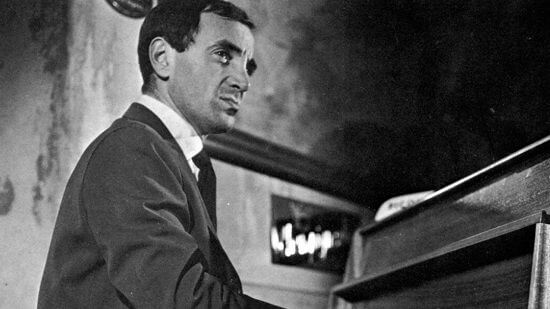
François Truffaut’s Shoot the Piano Player feels like the tragicomic reverse of Melville’s Le Doulos (No. 53). Instead of adapting French literature through an American lens, Truffaut does the reverse, turning David Goodis’ crime yarn Down There into an altogether unpredictable story about commercialism, artistic purity, and the ways our pasts catch up with us. Shoot the Piano Player keeps its tongue firmly in cheek as Truffaut oscillates between absurd slapstick and heartbreak. A man swears to his honesty on his mother’s soul, and the camera cuts away to dear old mom as she falls down dead in her kitchen; Truffaut’s protagonist, Charlie (Charles Aznavour), plays a ditty in the dive bar where he works, haunted by the death of his wife as well as his rising career as a concert pianist. The film is a romp until it’s a downer. —A.C.
58. Gun CrazyDirector: Joseph H. Lewis
Year: 1950
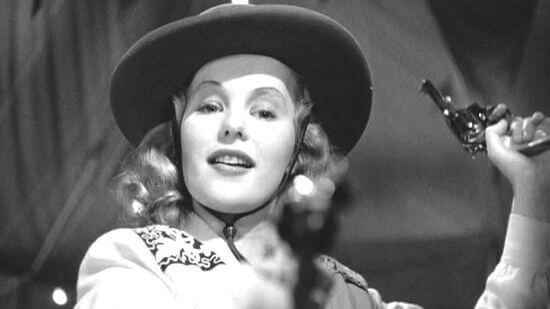
Of all the films on this list, Joseph H. Lewis’ deliriously lusty Gun Crazy might be the best starting place for viewers looking to brush up on their film noir. Gun Crazy gets it. More than just about any noir of any era, Gun Crazy understands on a cellular level why people watch noirs, why the criminal element has such an incongruously romantic appeal. The film is an embarrassment of naughty delights, notably the tension between John Dall and Peggy Cummins, so taut it’s fit to snap; it’s also made with high-level craftsmanship, best exemplified in a bravura bank robbery sequence shot in one jaw-dropping take. Men do all kinds of crazy stuff in the name of love. Watching Dall embark on a life of gun-toting crime with Cummins doesn’t strike one as all that far-fetched. —A.C.
57. Sexy BeastDirector: Jonathan Glazer
Year: 2000
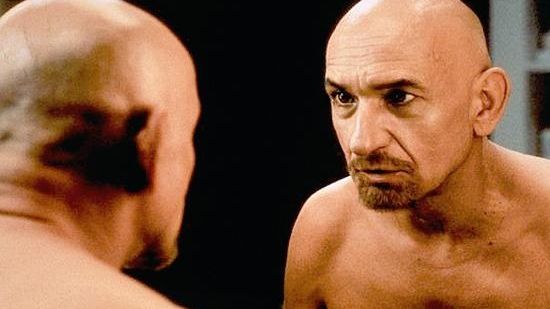
Two decades may as well be a lifetime removed from his career-defining, Oscar-winning role as Gandhi in this wicked 180 for Sir Ben Kingsley. In Jonathan Glazer’s slick directorial debut, Kingsley portrays ferocious sociopath Don Logan, who drops by his retired partner-in-crime Gal Dove’s rural Spanish villa to demand his participation in “one last job” (right), a bank heist in London. The word “no” doesn’t register in Don’s vocabulary, though a litany of scalding, Cockney-infused vitriol most certainly does. As the situation rapidly and bloodily deteriorates, the depths of Kingsley’s savagery is astonishing. Ian McShane intimidates as Logan’s underworld boss, and Ray Winstone, as the contented former safe-cracker on the receiving end of Don’s unchecked rage, provides the most obvious study in contrasts. Note the physicality of Gal’s doughy, overly tanned domesticate versus Don’s lean, mean monster, without an ounce of body fat or, it seems, humanity. (Not-so-fun fact: Kingsley based the characterization on his … grandmother.) So, too, does Glazer (Under the Skin) counter the blistering sun and craggy mountainsides with large bodies of water—both as setting and plot device, in still and torrent form. Sexy Beast is a sophisticated thriller that deals in conflict of all stripes. —A.S.
56. Clash By NightDirector: Fritz Lang
Year: 1952
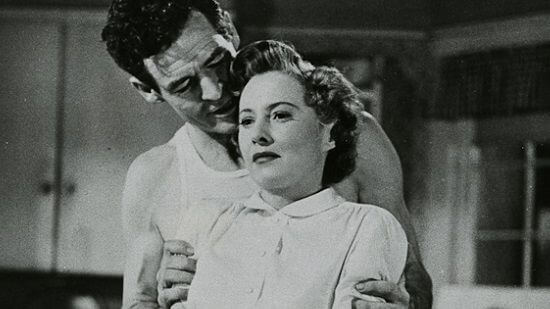
Fritz Lang’s soapy love triangle, adapted from the Clifford Odets play, stands apart thanks to leading lady Barbara Stanwyck. City girl Mae Doyle (Stanwyck) returns to her native Monterey, California, a salt-of-the-earth coastal community where she reconnects with her resentful younger brother and his impressionable girlfriend (played by Marilyn Monroe). Once a politician’s mistress, Mae has played fast and loose with her life choices and has nothing much to show for it, hence her words, “Home is where you’ve come to when you run out of places.” With equal measures of resignation and embitterment, Mae starts dating an uncomplicated but solid fisherman (Paul Douglas) whom she knows will take care of her. But since she can’t leave well enough, if uneventful, alone, she starts hanging around a drunken, married prick (Robert Ryan) who mirrors her cynical worldview. She marries the simpleton and has his baby but has an affair with the S.O.B., also a nasty misogynist—there’s a not-so-under current of domestic violence and S&M throughout the melodrama—until the fit hits the shan, and Odets’ signature, stylized dialogue smacks the aw-shucks out of small-town life, jarringly so. Split in two parts, separated by a year, of almost equal length, Clash By Night adds up to more than the sum of its boilerplate parts. By framing the portrait of fear and deep disappointment amid the angles of Monterey, with its docks and canneries, Lang heightens the organic consequences of bad decisions—as inevitable as the waves rolling in to shore. There’s a neo-realist tension to the usual genre themes of repression, betrayal, and forgiveness, introduced with Lang’s opening, documentary look at the local fishing industry. As Mae comes to grips with the pointlessness of it all—“Love because we’re lonely, love because we’re frightened, love because we’re bored,” she shrugs—Clash By Night offers a resounding example of the classic noir patriarchy, its femme fatale ultimately put in her place. —A.S.
55. The Last SeductionDirector: John Dahl
Year: 1994
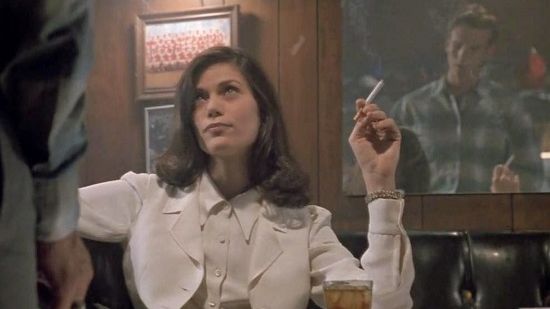
John Dahl hit his stride in this uncompromisingly vicious character study. Bridget (Linda Fiorentino) is a brazenly sexual, proudly scheming vixen who makes off with the bank she convinced her husband to sell drugs for, then snags an unsuspecting stranger in facilitating the getaway. Fiorentino is Oscar worthy as the diabolical femme fatale. Not only does she have absolutely zero compunctions whatsoever, she delights in every foul deed, whether it’s telling her spouse to screw off or screwing her next unwitting victim. Career everyman Bill Pullman has his moments as the jilted hubby out for revenge, and Peter Berg is quaintly endearing as the dummy who falls for her. But this is far and away Fiorentino’s show. With more balls, intellect and self-possession than her male counterparts could muster among themselves, her character bristles with contempt. She toys with her victims when she’s not yawning at them, or flat-out throwing them away. “How ’bout us going out on a real date sometime?” Berg’s poor sucker asks Bridget after a romantic straddle against a chain-link fence. “Why?” she asks—ain’t nobody got time for that. As with Red Rock West, The Last Seduction is self-aware but sincere. It’s sublimely dry, dark comedy that’s dead serious. We can only imagine what the female-fearing Powers That Be at the Production Code would’ve done with this cinematic middle finger. —A.S.
54. Miller’s CrossingDirector: Joel and Ethan Coen
Year: 1990
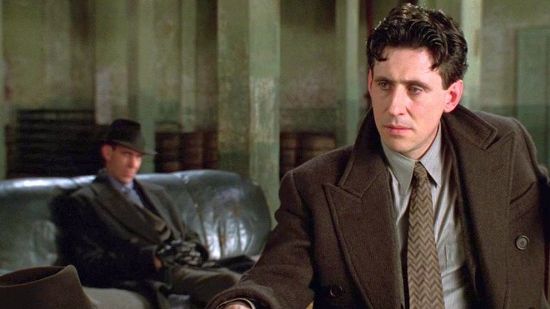
Like O Brother, Where Art Thou? a decade later, Miller’s Crossing is a terrible choice for those who prefer their Coen films a little less Coen-ish. It’s highly stylized, confusing and often ridiculous. But the parts of this Barry Sonnenfeld-shot noir that do work are glorious—the blustering menace of Albert Finney’s Irish mob boss, Gabriel Byrne’s casual indolence as his right-hand man, and most of all, John Turturro’s masterful painting of the spectacularly weaselly bookie Bernie Bernbaum. “Look in your heart! ”—Michael Dunaway
53. Le DoulosDirector: Jean-Pierre Melville
Year: 1962
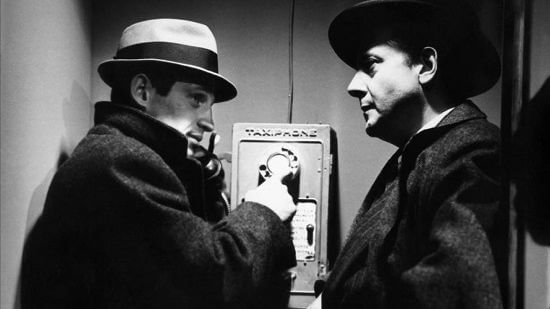
At the start of Jean-Pierre Melville’s Le Doulos, a handy dandy intertitle card kindly lets us know that the film’s name refers either to a style of hat or a police informant. Once the picture commences, we get plenty of both plus the oozing-cool style of Melville, whose tendency to play down everything in his frame makes even his use of shadow and light seem aloof. Le Doulos is the most-least French contribution to this list; it’s Melville’s adaptation of a novel by Pierre Lesou, but he blends Lesou’s words with twists on symbols and staples of American noir. A purist might argue that combining a French novel with American sensibilities is an implicit rejection of the filmmaking model he and his fellow Rive Gauche comrades established in the 1950s. In truth, that synthesis produces a celluloid slurry that’s uniquely Melville, minimalist and slick. —A.C.
52. Mulholland Dr.Director: David Lynch
Year: 2001
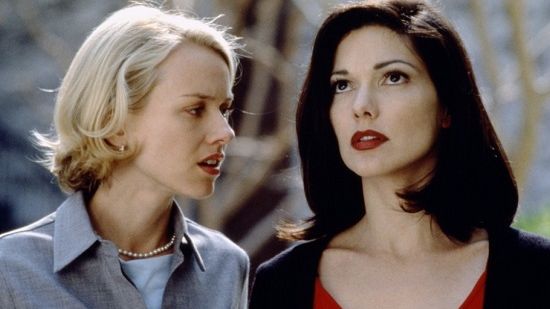
Film noir has always been an unmistakable influence in the work of David Lynch, the patron saint of bizarrely gleeful genre experiments. With Mulholland Dr., however, Lynch took his fascination with the subgenre to a whole other level, depicting a world where a character’s interior life influences not only the film’s visual style but its narrative structure as well. In the first great performance of her illustrious career, Naomi Watts plays a wide-eyed actress newly arrived in Hollywood who stumbles upon a beautiful young woman who can’t remember who she is. That pithy logline only touches the tip of the iceberg, as the film delights in throwing numerous other subplots and mysteries at its audience only to violently pull the rug out from under them in its latter half. Mulholland Dr.’s brilliance is enough to make David Lynch’s exile from the feature film world all the more painful. —M.R.
51. The Long GoodbyeDirector: Robert Altman
Year: 1973
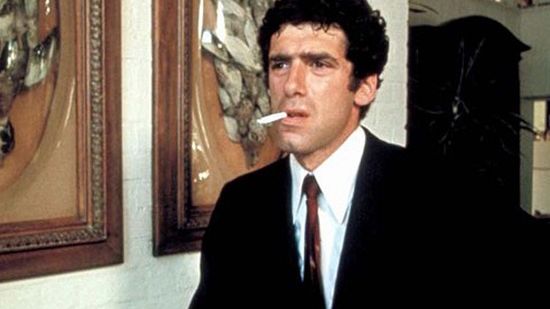
It’s muggy in L.A. and Philip Marlowe (Elliott Gould) is shrouded in an opaque suit, a getup whose fabric one assumes barely breathes, especially with so much cigarette smoke clogging up its woolly pores. He’s a deeply square person—though it’s the early ’70s, he debatably makes smoking look cool, and though he lives in an apartment complex with a giggly group of young coeds given to shirtless shenanigans and still sweating off the hangover of Free Love, he’s a barely noticed figure. He’s a loose thread on the fallow fringes of a sophisticated city, a grown man with nothing better to do on a clear, late night than feed his cat … if he can even find it. Marlowe is a man of another time, “a born loser” as even one of his closest friends calls him. And the world into which Altman abandons him isn’t one of dark alleyways or the damp, wan glow of streetlamps—chiaroscuro be damned—it’s the bright dawn of something new and something disconcertingly shiny in America. The Long Goodbye is Altman’s stab at and devastation of film noir, pitting its beleaguered protagonist not against those stuffy, old, deeply ingrained mechanisms of institutionalized evil, but against a much younger brand of nihilism. In Altman’s noir-ish wasteland, there is nothing lurking beneath the surface—it’s all surface—and our only moral compass is a chain-smoking, asexual dweeb who isn’t so much righteous as he is just plain ignored. —Dom Sinacola
50. Le SamouraiDirector: Jean-Pierre Melville
Year: 1967

Flip a coin to decide whether Le Samourai or Le Doulos is the coolest Melville film of them all; odds are, it’ll land upright, because that’s an impossible distinction to make. Melville films pulse with ineffable cool. In the case of Le Samourai, proof of Melville’s dedication to brewing substance from style lies in the film’s enormous influence: Everybody from Jim Jarmusch to Madonna recognizes Melville’s flair, and they’ve been imitating it, or mixing it with their own trademarks, for years. There are hitmen movies, and there are hitmen movies, and standing head and shoulders above most of them there’s Le Samourai, a movie that makes the lethal discipline of knocking people off into fine art. It’s as much a study of human isolation as it is a paean to the magnetic pull of a sleek aesthetic. —A.C.
49. One False MoveDirector: Carl Franklin
Year: 1992
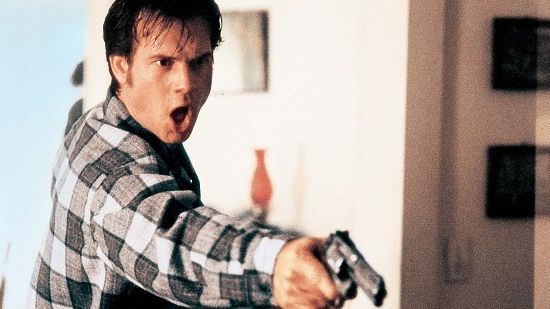
Carl Franklin’s excellent early ’90s neo-noir walks a razor-thin tightrope of suspense: You get the sense from one minute to the next that any step out of place could send the entire narrative into violent anarchy. Franklin’s film has great aspirations, delving into the complexities of modern American race relations just a few years after Spike Lee wrote the cinematic book on them with Do the Right Thing. He packages those socially aware goals alongside a tale of drugs, money, spectacularly brutal violence, and familial reconciliation. One False Move never goes quite where you expect it to, and that sense of unpredictability, combined with Franklin’s knack for speaking authentically to experiences from every angle of racial division, make it a sterling gem. —A.C.
48. Journey Into FearDirector: Orson Welles, Norman Foster
Year: 1943
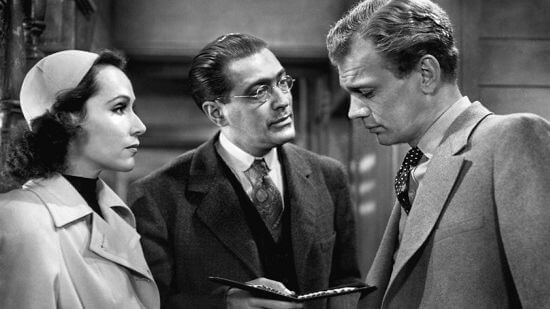
The story goes that Orson Welles was set to direct this spy thriller but other commitments precluded him from doing so, thus Norman Foster (Kiss the Blood Off My Hands, the Mr. Moto and Charlie Chan series, Woman on the Run) was brought on the production. And though documentary footage has Welles insisting he had no directorial hand whatsoever in the finished product, his touch is all over it—the least of which is the cast, including Mercury Theatre Players Joseph Cotten, Ruth Warrick, Agnes Moorehead and Everett Sloane. Stylistically speaking, the screen adaptation of Eric Ambler’s tail of Nazi-era espionage and double-crosses on the high seas—co-scripted by Cotten and, admittedly in this aspect, Welles, who also produced, co-starred, designed and storyboarded (really, Orson?!)—trades in Welles’ signature angles, lighting schemes, and mise en scène. The noir tells are all there, too: characters of universally suspect motives; subconscious themes and dream states; and moody flourishes like the foreboding refrain of a scratched phonograph record. Then there’s that Citizen Kane-esque pre-credits opening, which Welles did in fact cop to creating, and the climactic, ledge-top showdown (which he did not). Hacked to barely over an hour in length by RKO, Journey Into Fear is a fascinating if flawed preview of genre masterworks like Touch of Evil and The Lady from Shanghai (not to mention The Third Man) to come. —A.S.
47. Sorry, Wrong NumberDirector: Anatole Litvak
Year: 1948
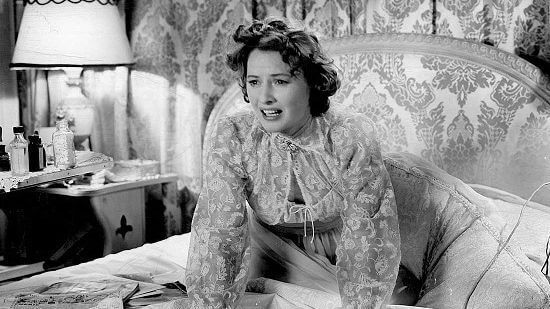
A story of unintended connections and one woman’s spiraling descent into paranoia and terror, Sorry, Wrong Number gets sort of a bum rap next to Double Indemnity in Barbara Stanwyck’s catalogue of awesome performances. The film alternates between flashbacks and the present, and so too does Stanwyck’s spoiled, shiftless heiress to a drug-store empire go from lethargy to hysteria. Turns out she’s the center of a murder plot, though she doesn’t quite realize it at first and must piece together the architecture of her own demise as she lies bedridden and alone in her opulent Manhattan digs. Stanwyck gives Sorry, Wrong Number a pulse, while Anatole Litvak’s direction soaks her growing terror in shadows so deep, the intruder sneaking through her house can’t help but bump into the furniture. —A.C.
46. The Blue DahliaDirector: George Marshall
Year: 1946
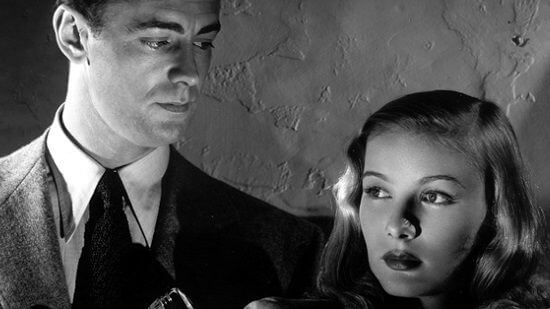
George Marshall (Destry Rides Again, How the West Was Won) directed Alan Ladd and Veronica Lake in this Raymond Chandler labyrinth, which gained added notoriety with the real-life “Black Dahlia” murder of Elizabeth Short the year after the film’s premiere. Also of note is Chandler’s Academy Award nomination for best original screenplay; Blue Dahlia marks the only one he ever penned specifically for the screen, his other scripts having been adapted from novels of others and, oddly enough, other film adaptations of his own novels written by other screenwriters. Trivia aside, Ladd is stoic swagger as our hard-boiled protag Johnny, a recently discharged bomber pilot who, upon his return stateside to Hollywood, is accused of his cheating wife’s murder. On the lam to clear his name, he runs across a host of sketchy characters, among them his wife’s lover—the owner of the film’s namesake Sunset Strip nightclub—and, it turns out, said lover’s estranged spouse (Lake). It’s all very sordid—a little too complicated for its own good, really—but a bracing watch, typified by the genre’s tropes and slang-riddled dialogue. One more fun fact, and a minor spoiler alert: Chandler’s original (vastly more satisfying) ending had one of the Navy men as the killer, but given the film’s release came so close to the end of WWII, the U.S. military asked that a veteran not be shown in such a negative light. Thus the ending was rewritten—and with that, folks, you’ve got one of noir’s corrective conceits in a nutshell. —A.S.
45. The Strange Loves of Martha IversDirector: Lewis Milestone
Year: 1946
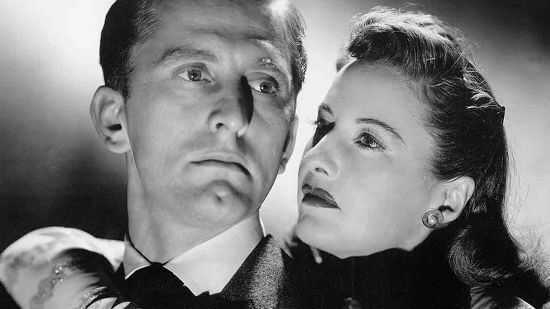
Noir matriarch Barbara Stanwyck, Van Heflin and Kirk Douglas—in his film debut—star in this knotty melodrama, set in motion with the rash murder by teenaged Martha Ivers of her rich bitch of an aunt. Walter, the son of Martha’s tutor, saw it go down but doesn’t say anything, and the two blame the incident on an intruder, who is convicted and hanged (whoops). Stanwyck and Douglas assume the roles of adult Martha and Walter, the latter a drunken, corrupt D.A. who married the now miserable heiress and business mogul. His love for her is entirely one-sided, so the return of Martha’s childhood friend Sam (Heflin) to town stirs up old secrets and older feelings—of jealousy for Walter, of guilt, regret, and tellingly, fear for Martha, who believes Sam also witnessed the murder. Working from a short story by John Patrick, director Lewis Milestone (All Quiet on the Western Front, Two Arabian Nights) takes his time with the backstory and creates a well-crafted web of noir staples: blackmail and betrayal; gambling drifters and conniving dames; the psychological consequences of past sins; seedy and grandiose settings; um, lots of rain; and a morally compromised center that leaves little hope for anyone. There’s also a curiously refreshing gender play in the presence of Sam’s lady friend, Toni (Lizabeth Scott), a fellow former street kid and parolee. Yet while she wants to move on, Sam gets sucked back into Martha’s world. It’s an interesting characterization, as is Douglas’, a broken shell of a man who self-medicates under the weight of one lie upon another. It bears repeating this is his first screen role. He’s as heartbreaking as Stanwyck is heartless—and yet her performance, one in a fine cast of them, still manages sympathy at the film’s tragic end. —A.S.
44. Body HeatDirector: Lawrence Kasdan
Year: 1981
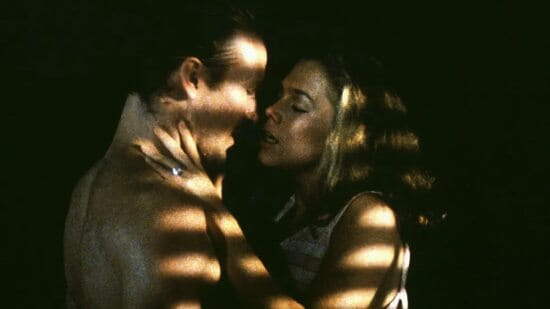
Lawrence Kasdan’s directorial debut remains, to this day, one of the sexiest movies ever to grace the big screen—not to mention, the rare occasion where the phrase “erotic thriller” can be appropriately uttered without the slightest hint of a snicker. Boasting a star-making performance by Kathleen Turner, the film takes the standard Double Indemnity/The Postman Always Rings Twice premise (femme fatale hires lover to kill husband) and grafts it onto the humid nightmare that is Florida in the midst of a heat wave. Memorable sex scenes aside, however, the film is also a master class in how to build suspense and escalate tension. —M.R.
43. Taxi DriverDirector: Martin Scorsese
Year: 1976
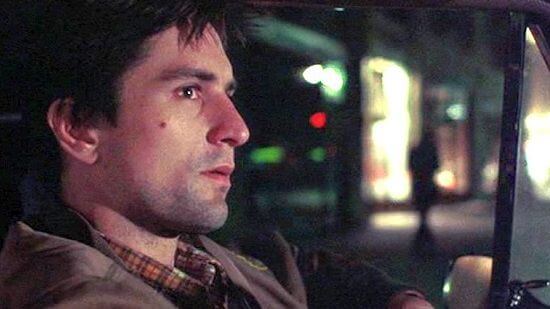
Taxi Driver was Scorsese’s breakthrough: a seething condemnation of alienation—not to mention New York’s descent in the 1970s into a crime-ridden hellscape—delivered with such clinical coldness that when Scorsese’s star (and longtime collaborator) Robert De Niro finally explodes, it’s unspeakably upsetting. If Taxi Driver now feels slightly overrated, it’s only because the movie’s DNA has crept into so many subsequent filmmakers’ efforts. Scorsese grew up loving Westerns, and Taxi Driver could just as easily be his version of The Searchers—except his man-out-of-time finds no redemption. —T.G.
42. The Hitch-HikerDirector: Ida Lupino
Year: 1953
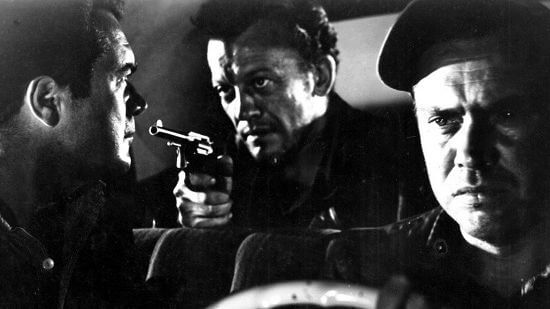
Who can say no to Ida Lupino? (Not Doc Sportello, that’s for sure.) As a woman-helmed production, The Hitch-Hiker was a rarity in its heyday, though if you didn’t know Lupino held the reins, you might not guess the film was directed with a feminine touch. The Hitch-Hiker was as much an anomaly in Hollywood as it was a change of pace for Lupino, who, after directing four features that each revolved around the struggles and victimization of women, decided to try her hand with decidedly more masculine fare. Decades later, her film is still generally considered the first noir directed by a woman, but it should really be thought of first as a slim, unsparing, suspenseful slice of true crime. She puts her foot on the gas and doesn’t let up until the very end. —A.C.
41. White HeatDirector: Raoul Walsh
Year: 1949

The oedipal and criminal collide yet again with James Cagney’s psychopathic mama’s boy Arthur “Cody” Jarrett, whose deadly train-robbing exploits ultimately land him in jail. While there he befriends an undercover fed (Edmond O’Brien, whose other noirs include The Hitch-Hiker) bent on nailing him for greater crimes. After Jarrett’s plottingly protective ma (Margaret Wycherly) get killed—by his equally scheming wife (Virginia Mayo), though she convinces him his right-hand man did the deed—he stages a break, and his next heist. In one of his darkest roles, 50-year-old Cagney is at his unhinged best, a powder keg of neuroses and sadistic impulses who can feign insanity—as he does in the prison infirmary—for only so long before his delusions overtake him completely. Prone to throbbing headaches, he’s a dangerously troubled tough guy who still retreats to his mother’s lap, and declares “Made it, Ma! Top of the World!” as the bottom falls out from under him. This postwar psychic landscape is subversive as hell—and suburban too, no longer confined to metro limits. On that note, the damage is no longer rooted in his environment; Jarrett’s a disaster from the inside out, dysfunctional in his very wiring (thanks, ma!). Director Raoul Walsh, reuniting here with Cagney after The Roaring Twenties and The Strawberry Blonde, echoes the off-the-rails energy of his leading man, infusing the film with an incendiary nihilism and amorality. The bookending set pieces, shot on location in industrial California, pulse with realism. The cumulative effect represents a primal deviation—make that devolution—from social conformity and civilization. So, yeah, of course he’s gotta get blown up, noir-comeuppance style. Still, Cagney is mesmerizing to watch self-destruct. —A.S.
40. Pickup on South StreetDirector: Samuel Fuller
Year: 1953
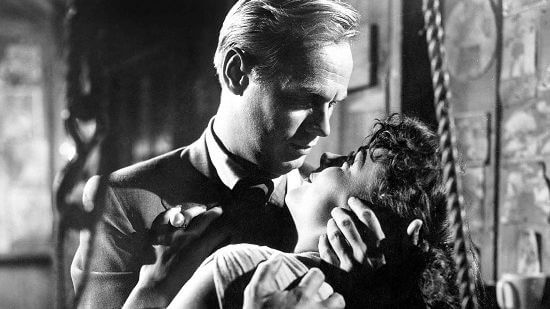
Despite receiving frequent praise from the likes of Martin Scorsese, Wim Wenders, Jim Jarmusch and Quentin Tarantino, writer/director Samuel Fuller remains an underseen and underappreciated filmmaker beyond a circle of Criterion-loving cinephiles. In a career spent challenging audiences with brutal action and controversial subject matter, Pickup on South Street actually marks one of the filmmaker’s more accessible works. Indeed, the opening set-up feels akin to the sort of “wrong man” scenarios favored by Hitchcock—a New York thief ends up pickpocketing a young woman’s wallet, only to discover it contains top-secret government intel. The man quickly realizes he has become an unwitting player in some serious Cold War-era espionage. Though undeniably dated in certain places, the film’s take on politics and sex as well as its willingness to position an unrepentant thief in its main character slot represented the kind of daring mentality that would have been celebrated years later in the New Hollywood era. —M.R.
39. Odd Man OutDirector: Carol Reed
Year: 1947
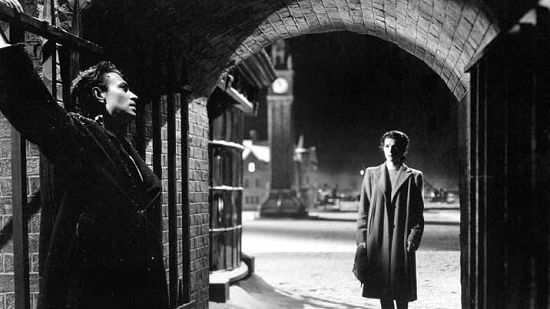
Rarely has a noir more successfully depicted a misfit on the margins of society than in director Carol Reed’s existential allegory. Two years before The Third Man roamed the streets of Vienna, James Mason’s conflicted IRA cell leader Johnny is abandoned by his own—and hunted by police—in the wet cobblestone alleyways of Belfast, a bullet to the shoulder and a blow to the soul. A botched heist to fund his local organization has left him in frantic search of refuge and in deteriorating physical and psychological condition, a mental state conveyed brilliantly by cinematographer Robert Krasker’s expressionist motifs, first-person POV, and camera trickery. The environment amplifies Johnny’s anxiety and confusion: After months in a safe house, daylight and its inhabitants freak him out; prison time has weakened his constitution and dulled his senses; shifts in the weather (from overcast skies to rain to snowfall) both reflect and affect his plight. Given his overarching state of disrepair, he’s subject to increased delirium and hallucinations, not to mention a profound crisis of faith, dogma, even metaphysics. Heady stuff, sure, yet at its bones Odd Man Out is about humanity. Mason is superb as the angst-ridden antihero of few words. He’s an ordinary man in an extraordinary situation, who during the course of one fateful evening encounters similar persons, of both noble and less-than-noble actions. Johnny’s revolutionary affiliations notwithstanding, this isn’t a political commentary, it’s an intensely personally one, a meditation on what it means to be good or bad, innocent or guilty. A masterpiece of postwar British cinema. —A.S.
38. L.A. ConfidentialDirector: Curtis Hanson
Year: 1997
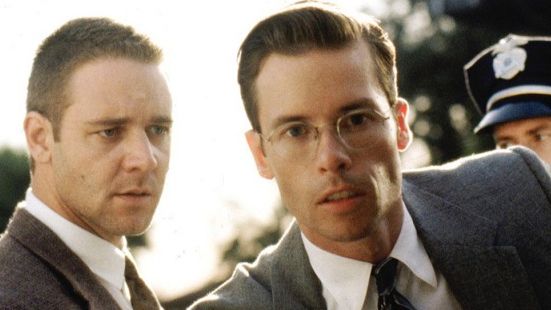
This sumptuous adaptation of James Ellroy’s novel never visits Roman Polanski’s preferred corner of Los Angeles, but it rivals Chinatown in both quality of filmmaking and cynicism of spirit. This film not only announced Hanson as a filmmaker well beyond his previous work (The Hand That Rocks the Cradle?), but endeared Russell Crowe and Guy Pearce to American audiences by giving them their first signature roles. This tabloid version of the City of Angels celebrates all the sex, corruption and other seedy circumstances the superficial city can provide. It offers a string of unforgettable sequences, from Bud White’s Yuletide raid to Exley’s interrogations to the final shootout where the film’s utterly Ellroy perspective on police morality is (quite literally) executed with masterful precision. At the time of its release, L.A. Confidential was praised as a throwback, a smeared portrait of the 1950s embracing the spirit of crime noirs (and even westerns) of the 1970s. That was almost 20 years ago. Here’s hoping some young punk or frustrated journeyman is ready to dust off these storytelling tropes again to produce something this timeless. —B.W.
37. Blood SimpleDirectors: Joel and Ethan Coen
Year: 1984

Most filmmakers spend large chunks of their careers building up to greatness. Rare is the auteur who comes out swinging with an essential debut. So that means we can just chalk up the Coen Brothers as a rarity, and qualify Blood Simple as something special. Make no mistake: This is a Coen movie through and through, unapologetically nasty and intentionally apathetic to the suffering of their characters. It’s also a remarkably telling blueprint for their careers as masters of crime gone wrong. As with so much of their future output, Blood Simple aestheticizes violence without fetishizing it. Bullet holes and knife wounds help color the film in dark brushstrokes—such is the Coens’ wont—and careful attention to shot composition ratchets the film’s morbid elements to almost intoxicating heights. You’ll want to look away, but the Coens keep your eyes glued to their somber fatalism. —A.C.
36. Nightmare AlleyDirector: Edmund Goulding
Year: 1947
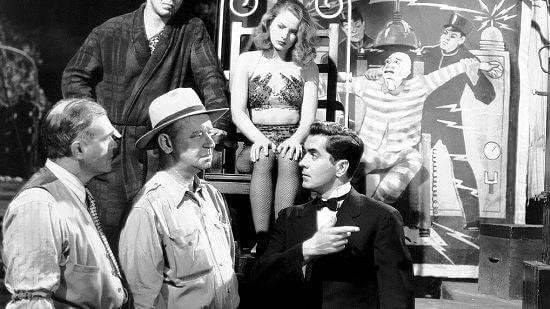
We typically define femme fatales as villainesses, charming, scheming women who lure unsuspecting men into the most dire circumstances possible. In Nightmare Alley, that stock character takes on the role of justiciar: It’s true that Helen Ritter’s unscrupulous psychologist leads Tyrone Power’s amoral con man to a bitter end, but do we really mind? It’s not like Stan Carlisle doesn’t deserve to have bad things happen to him, and maybe the price of his deceitful ambition is to spend his days biting off chicken heads in an alcoholic stupor for a third-rate carnival. Justice is blind, and occasionally it’s pretty ugly. Few noirs drive at that sordid reality better than Nightmare Alley. Whatever you think about Edmund Goulding’s film—it only attained its status as a noir masterpiece in recent years—you won’t soon forget it after a viewing. —A.C.
35. Murder, My Sweet Director: Edward Dmytryk
Year: 1944
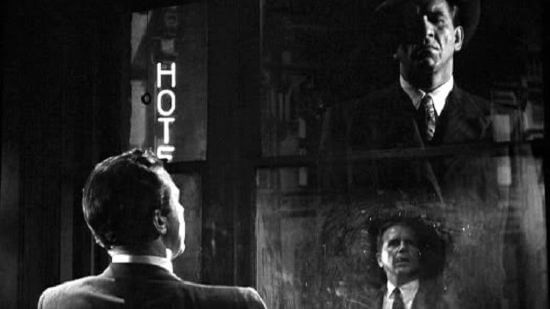
Edward Dmytrk’s adaption of the 1940 Raymond Chandler novel Farewell, My Lovely (whose title was used for the film’s U.K. release) cast Dick Powell in what would be the career-redefining role of P.I. Philip Marlowe, who as the movie opens is temporarily blinded and bandaged. As he narrates his story to police, we learn of his entanglement in numerous investigations—of the former girlfriend of an ex-con, a stolen jade necklace, one suspect character after another—and a couple of murders. The false leads mount in a head-spinning maze of cheeky one-upmanship. “I don’t know which side anybody’s on. I don’t even know who’s playing today,” Marlowe levels at one point, voicing viewers’ uncertainty. He’s, dare we say it, vulnerable. Dmytrk does a crafty job of arching a filmic brow at each of his players, in what is one of the most faithful and well-made Chandler adaptations (all the more so given its low budget). The caustic one-liners (John Saxton penned the screenplay) come fast and furious, the performances are uniformly excellent, from the duplicitous (Claire Trevor) to the wholesome (Anne Shirley), and the visuals are elaborate, as with a trippy, terrifying sequence during which Marlowe gets drugged. Powell so thoroughly and wryly inhabits the gumshoe’s, er, shoes, the role effectively broke him out of a decade-long pigeonhole in screen musicals. —A.S.
34. Night MovesDirector: Arthur Penn
Year: 1975
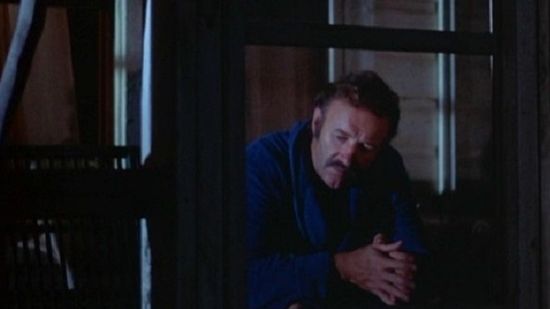
A criminally underrated gem of ’70s cinema, Night Moves stars Gene Hackman as a retired football player-turned-private investigator who is hired by an aging starlet to track down her wayward daughter. Naturally, this seemingly simple assignment leads our hero down a convoluted path littered with illicit relationships and rampant corruption. Released a year after Francis Ford Coppola’s much celebrated The Conversation, Night Moves very much serves as that film’s spiritual sibling—a complex, somewhat opaque treatise on American cynicism in a post-Watergate world. —M.R.
33. Crime WaveDirector: André de Toth
Year: 1954
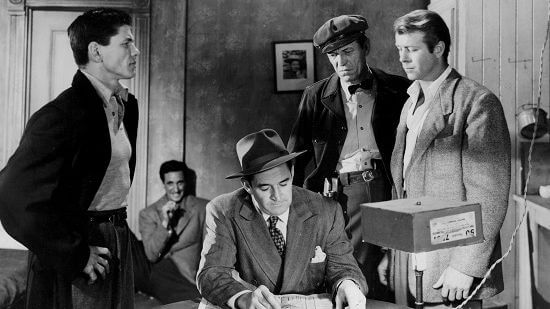
Tough life out there for a reformed convict, huh? That’s the nugget at the core of André de Toth’s Crime Wave, a movie with a moral compass and surprising amounts of compassion for bad guys trying to go straight. Gene Nelson’s great lament resonates: “Once you do a stretch, you’re never clean again!” His plight is moving to the point of heartbreak. Thankfully, or maybe not, his character has attracted the attentions of Sterling Hayden, a tough-minded detective with a Baratheon-esque devotion to rule of law. Nelson’s in a pickle when a dying bank robber shows up on his doorstep, his partners far, but not far enough, behind him. It’s bad enough to have crooks at your door, but Hayden isn’t the sentimental type. De Toth refuses to glamorize their ordeal, or stylize his Los Angeles filming locations; he shoots with an aesthetic as frank as Hayden’s manner. —A.C.
32. Criss CrossDirector: Robert Siodmak
Year: 1949
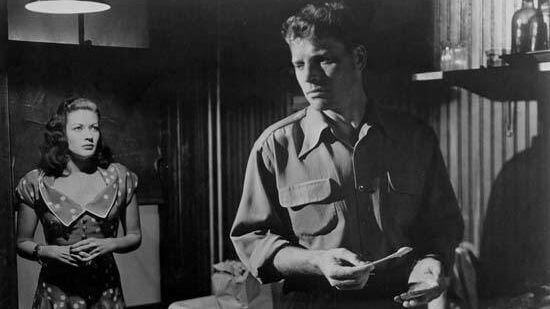
Criss Cross marks the screen debut of future movie star Tony Curtis (here billed as “James Curtis”). Fortunately, the film—which reunites Burt Lancaster with Killers director/noir auteur Robert Siodmak—works as much more than merely a footnote in Curtis’ career. Lancaster stars as an armored truck guard who hatches a plan with his ex-wife to fake a vehicle robbing so they can make off with the loot. Per the title, the plotline soon transforms into a tangled web of double- (and triple-) crosses that concludes with an ending that, even by noir standards, is pretty damn bleak. —M.R.
31. Blue VelvetDirector: David Lynch
Year: 1986
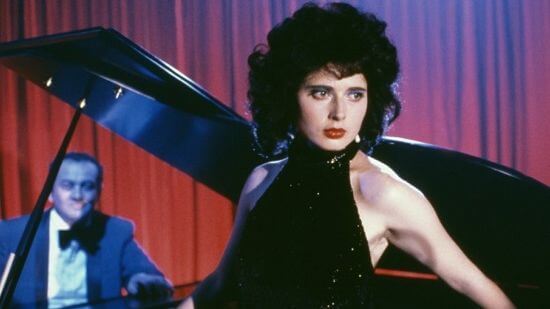
Blue Velvet represents everything cinema can be: horrific, hilarious, reality heightened to inexplicable, nearly intolerable heavens. This is storytelling as symbology, traditional American genres like noir and the thriller picked apart with unsettling aplomb. For example, take the noir part of this equation: Lynch concocts an oedipal circumstance out of Kyle MacLachlan’s innocent boy and Dennis Hopper’s evil “daddy,” with Isabella Rossellini’s sexy “mommy” persona both an unobtainable feminine figure and a sweet presence that must be protected. As adorable everyman Jeffrey Beaumont (MacLachlan) is seduced ever deeper into the disgusting underground of American domesticity (represented by a series of insectoid images, the denizens of our creepy crawly underworld), his outlook is light, and psychopathic Frank Booth’s (Hopper) is dark—in fact, Frank comments on this. Of course, he’s talking literally about the illumination of the room, but he also huffs helium and calls himself Van Gogh, so every gesture, every sideways word should be taken with a grain of salt. Or fertilizer. And so, in black and white, Lynch finds blue: There is something deeply sad about the kind of normal, everyday stuff Lynch fixates upon, and in Blue Velvet that sadness is, whether we like it or not, the closest a film in the 1980s ever got to realizing the American Dream. —D.S.
30. The Set-UpDirector: Robert Wise
Year: 1949
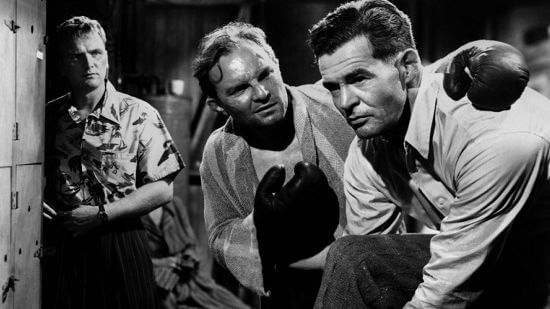
Before Robert Wise helmed The Sound of Music, before he enjoyed a briefly sustained stint on the Academy Awards’ circuit, he made movies like The Set-Up. Before he made The Set-Up, though, he edited two Orson Welles masterpieces, The Magnificent Ambersons and Citizen Kane (for which he was also nominated for an Oscar). Wise’s time with Welles shows in the crisp, clean construction of The Set-Up, a movie that hits with quick percussive impact and spares no time from one bout of action to the next. The film strikes a comparison between youthful and experienced viewpoints: James Edwards’ boxer on the rise is brimming with self-assurance, while David Clarke’s battle-scarred ring veteran speaks aloud to pugilists’ inevitable decline. Is Robert Ryan’s last attempt at glory worth suffering for? Is it worth the mental trauma it inflicts on his wife (Audrey Totter, showing off a different side of herself ahead of 1950’s Tension)? Wise answers both queries pretty definitively, but he builds drama so well that he handily earns the neatly tied-up ending. —A.C.
29. Blade RunnerDirector: Ridley Scott
Year: 1982
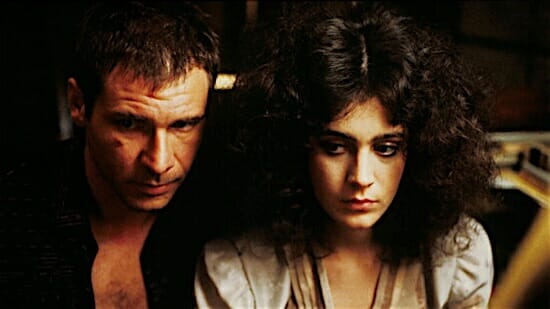
A box-office flop on its initial run, Ridley Scott’s Blade Runner (and its numerous post-theatrical re-edits) has since become one of the defining pillars of sci-fi filmmaking. Besides exploring deep, existential questions of what constitutes humanity and the repercussions that come with creating artificial life, the movie features extraordinary performances by Harrison Ford and Rutger Hauer, as well as some of the most emotionally intense action set pieces ever put to film. Moreover, a good portion of the film’s appeal lies in its incorporation of film noir aesthetics—shadow-filled, rainy metropolitan exteriors, a brooding yet resourceful investigator hero, retro ’40s fashion—into its dreary, dystopian setting. At one point, the film even boasted a Philip Marlowe-esque voiceover narration that was thankfully excised from future cuts. Once regarded as a failed experiment, Blade Runner now registers as nothing short of a classic. —M.R.
28. Night and the CityDirector: Jules Dassin
Year: 1950
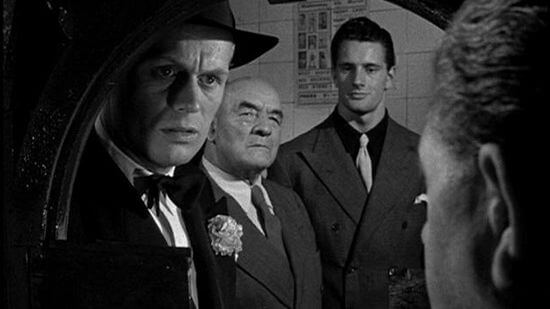
London is cast as a waking nightmare in Jules Dassin’s charged portrait of greed, which stockpiled surpluses of pathos and anxiety early on, behind the scenes. Vilified for past Communist sympathies, Dassin was sent to Britain by 20th Century Fox studio head Darryl F. Zanuck to shoot the adaptation of Gerald Kersh’s best-selling novel (which Dassin admitted he never read). Along with his newfound status on many a Hollywood blacklist, Dassin was told by Zanuck the foreign production would also help lead actress Gene Tierney get over a breakup—she was allegedly suicidal as a result. So even before the cameras started rolling, Night and the City was steeped in despair. Factor in Richard Widmark’s turn as Harry Fabian, a small-time wheeler-dealer who attempts to infiltrate the local wrestling subculture, and Dassin’s refusal to grant his characters clemency, and Night and the City hits new depths of noir pessimism—all threat, no sentiment. It’s no stretch to draw parallels between Dassin’s displaced filmmaker and Fabian’s Yank in London, nor his vision of the noir city, quintessentially American, across the pond. Harry is, as his long-suffering friend Mary (Tierney) tells him, “an artist without an art,” a cipher left to scavenge the hellish urban underbelly, London’s architecture practically suffocated in expressionist chiaroscuro. The bottom-feeders (more Tinseltown commentary, mayhaps?) he comes across are liars of one sort or another: forgers, thieves, panhandlers, smugglers, promoters—but even they have a niche, a trade. “You could have been anything. Anything. You had brains … ambition. You worked harder than any 10 men. But the wrong things. Always the wrong things…” Mary laments. Harry’s nothing, and Dassin—hotly and brilliantly—lets the anger seethe. —A.S.
27. Mildred PierceDirector: Michael Curtiz
Year: 1945
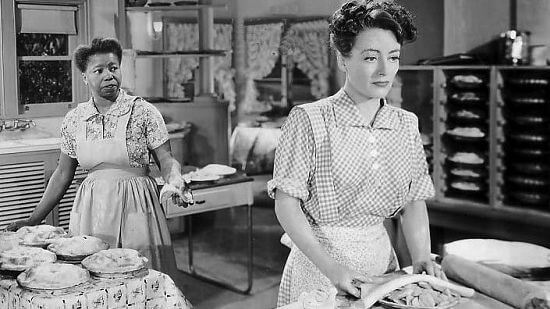
Like Double Indemnity, Michael Curtiz’ Mildred Pierce succeeds on the strength of its leading lady; in this case that’s the immortal Joan Crawford, who plays the film’s central character, not to mention all of its heart and soul. (Arguably, it’s the most definitive Crawford performance of all time, at least next to What Ever Happened to Baby Jane?.) Mildred Pierce is a strong woman driven by an inexhaustible love for her children, Veda (Ann Blyth) and Kay (Jo Ann Marlowe), but she’s also stymied by the restricting grasp of a patriarchal society. Even Veda is contemptuous of Mildred for daring to have the moxie to have it all. The film is about more than prickly mother-daughter relationships, of course, specifically the murder of Mildred’s second husband. But sandwiched in between Curtiz’ probing whodunit lies one of noir’s most sympathetic and purely humanist tales. —A.C.
26. The Postman Always Rings TwiceDirector: Tay Garnett
Year: 1946
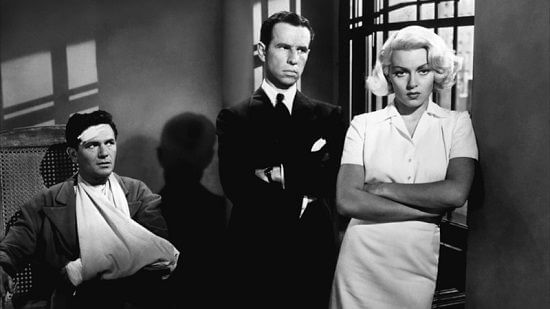
“A beautiful femme fatale saunters into an unsuspecting man’s life and entices him into committing murder for her.” This logline could be used to describe any number of classic film noirs. Most of this can be traced back to author James M. Cain, who wrote two books—Double Indemnity and The Postman Always Rings Twice—that hinged on this premise. In the case of Postman, the archetypal sucker is a drifter (John Garfield) who falls into an affair with a beautiful married woman working at a diner (Lana Turner, in one of her most memorable performances). The two subsequently hatch a scheme to murder the woman’s much-older husband and seize control of his assets. Incidentally, MGM actually purchased the rights to Cain’s novel shortly after it was first published 12 years prior, but it took the success of Billy Wilder’s Double Indemnity adaptation at Paramount to convince them the story and its mature themes were a viable gamble. Even before that, Cain’s book had been unofficially adapted into two foreign productions—Le Dernier Tournant in France and Luchino Visconti’s Ossessione in Italy. It would go on to be adapted several more times, including again in 1981 with Jack Nicholson and Jessica Lange, but the 1946 version, with its button-pushing steaminess and stylish direction, remains the gold standard. —M.R.
25. The Wrong ManDirector: Alfred Hitchcock
Year: 1956
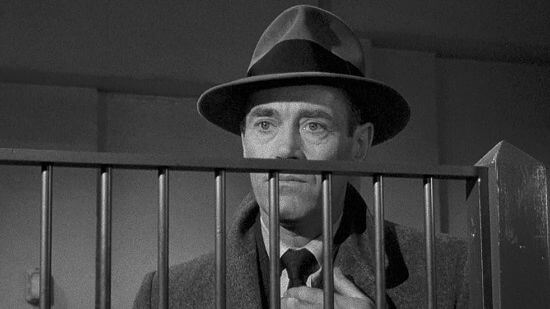
Leave it to the master of suspense to meld docudrama realism with the melodrama of film noir. “Alfred Hitchcock’s powerful portrait of a man … drawn from life!” The Wrong Man’s original trailer proclaims. It’s to the film’s credit that Hitch doesn’t screw around here, telling in full the story of a man falsely convicted for robberies he never committed. Unsurprisingly, Hitch is every bit as interested in the effects of the outrageous miscarriage of justice that befalls Manny Balestrero as he is in the lasting trauma his detention inflicts on him and his family. The Wrong Man puts a high premium on claustrophobic camerawork—we feel like we’re as confined as poor old Manny—but the film’s greatest impression is left in its aftermath. —A.C.
24. The Big HeatDirector: Fritz Lang
Year: 1953
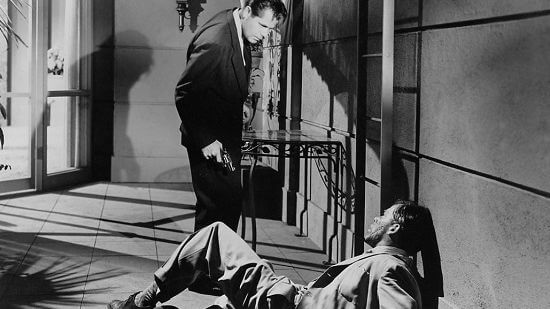
A pot of boiling coffee to the face is among the lasting impressions that remain long after the first, and second, and tenth viewings of Fritz Lang’s seminal noir. Glenn Ford stars as Det. Sgt. Dave Bannion, the poster boy of black-and-white morality in a sea of film noir gray. He’s a man on a mission, Johnny Law out to clean up the ruinous city. You see, something about the suicide of his colleague, one of scads of cops in the back pocket of the local mob boss, doesn’t sit right with him, and Lord help anyone who gets in his way—or even in his periphery. As the potential for justice seems to slip away, so convinced does Ford’s underdog become of his holy crusade, he’s blind to the collateral damage—emotional, too—or maybe it’s just that his self-righteousness trumps everyone and everything else. Black-and-white no more, eh? Along with Ford’s relentless (anti)hero (that parenthetical, depending on how you look at him), Gloria Grahame is incredible as the moll of Lee Marvin’s (also outstanding) second-in-command gangster. Working from a Saturday Night Post serial adapted by former crime reporter Sydney Boehm, Lang is meticulous in depicting the transition from principled family man to revenge-seeking vigilante, and the below-the-surface hypocrisy of this by-the-book guy, who prefers his own gun to the police department’s, anyway. Viewers can take the thrills at face value—and there are many, and they’re glorious and gut-churning. But what we think is a rather straightforward, if brutal, takedown of systemic corruption becomes something more nuanced, and chilling. “Keep the coffee hot,” the ultimately “triumphant” detective tells a clerk. Given the bodies left in his reckless wake, that line still feels too soon, some 60 years later. —A.S.
23. The KillingDirector: Stanley Kubrick
Year: 1956

Once upon a time, before Stanley Kubrick entered the pupal stages of his career and subsequently emerged as a god and master of his medium, he made movies like The Killing. Lean, mean and economical to a fault, The Killing gets lost in the shuffle of Kubrick’s career landmarks, but the man wielded impressive influence even in overlooked 80-minute heist flicks. (The Quentin Tarantino we all know and love and loathe might be a very different filmmaker today if not for The Killing.) Kubrick’s work here is no-frills and elegantly straightforward: Sterling Hayden plans one final holdup before retiring and settling down with Coleen Gray. No twists and turns, just good old-fashioned theft at the racetrack. The film revels in the gray morality of Hayden’s good intentions. Crime pays, at least until it doesn’t. —A.C.
22. In a Lonely PlaceDirector: Nicholas Ray
Year: 1950
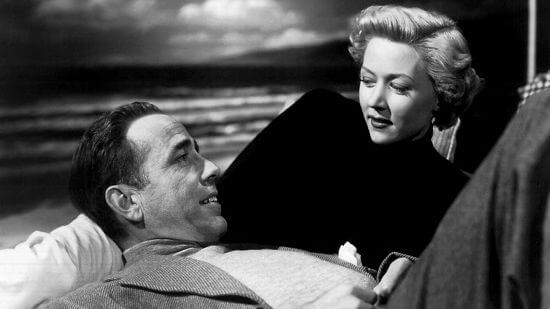
One of the great noirs of all time and one of the great feel-bad movies of all time. In a Lonely Place treats redemption as a cruel joke, a spell of relief that lasts only long enough for us to view its obsolescence. The film takes jabs at Hollywood and celebrity while telling the kind of dangerous love story E.L. James wishes she could write; Humphrey Bogart is a bad, bad man, but he’s also grossly compelling. He plays Dixon Steele, a Tinseltown screenwriter fallen on hard times whom we sympathize with in spite of ourselves. Apart from being a sad sack, he’s also an explosive lunatic with a frighteningly short fuse, which makes him dangerously alluring bait for his new neighbor, Laurel (Gloria Grahame). Theirs is an ill-fated romance, and through it, Nicholas Ray makes a hauntingly grim study of masculinity, set against the ratcheting suspense of a murder mystery yarn. —A.C.
21. Drunken AngelDirector: Akira Kurosawa
Year: 1948
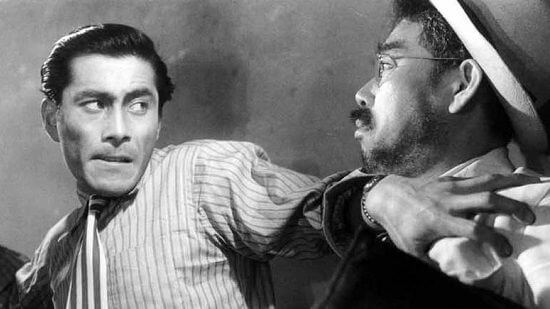
An act of genre deconstruction and muted political critique all in one. Akira Kurosawa plays with noir tropes more than he plays to them, deflating film noir’s inherent machismo by revealing the chief heavies of his cast as scrabbling cowards. Depending on your mood, Drunken Angel’s climactic brawl between Toshiro Mifune’s Matsunaga and Reizaburô Yamamoto’s Okada may either read as hilarious, pathetic or tragic. Aren’t mob heavies supposed to be intimidating? Like Rashomon, Drunken Angel puts male toughness on trial and makes it look ridiculous, but the study of manliness might be a smokescreen for Kurosawa’s veiled jabs at the board of censors installed by the U.S. government in post-World War II Japan. Note the Western clothing. Observe the recurring image of the bubbling muck that serves as one of the film’s central locations. The American occupation whitewashes and corrupts Japanese culture in equal measure, and Drunken Angel captures it all with deft humanism. —A.C.
20. The Lady From ShanghaiDirector: Orson Welles
Year: 1947
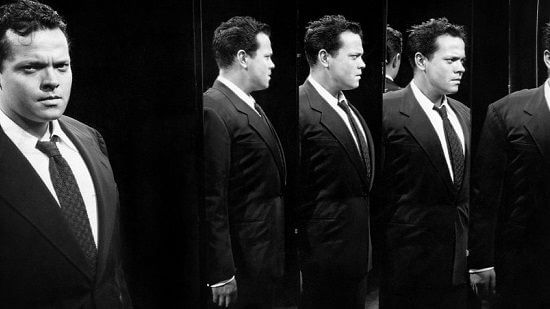
Orson Welles could do just about anything except speak in a convincing Irish accent, but regardless of his flimsy brogue, The Lady From Shanghai is a masterpiece. Funny to think that American critics looked down their noses at the film at the time of its release. Maybe they took offense at the inescapable scent of Welles’ passion for Rita Hayworth, his wife at the time and his ex shortly after production wrapped. He captures her in close-up with a hungry, enraptured eye, the most coherent image in a film that’s built on logical incoherence. The Lady From Shanghai has enormous ambitions that belie its tight running time, the end result of odious studio interference that nonetheless fails to impede the viewing experience. Come for Hayworth and Welles, stay for the film’s dizzying hall of mirrors shootout. —A.C.
19. The KillersDirector: Robert Siodmak
Year: 1946
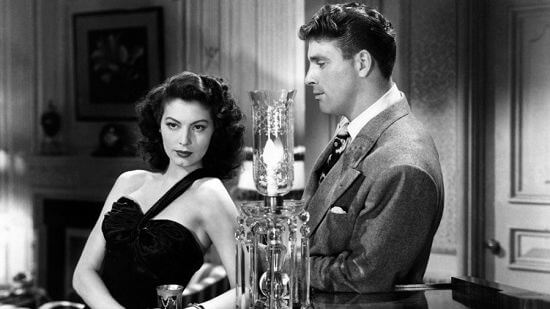
If you’re of the impression that Quentin Tarantino invented the concept of a nonlinear crime story involving boxers and hitmen, Robert Siodmak’s adaptation of Ernest Hemingway’s celebrated short story is a must-watch. The story commences with two assassins entering a small-town gas station and executing “The Swede” (Burt Lancaster), a former professional boxer. A life insurance investigator is subsequently sent to piece together the events that led to the Swede’s demise. From here, Siodmak and his screenwriters (which included future legendary directors John Huston and Richard Brooks) weave a fascinating story that, while not always the most inspired, more than picks up the slack with the help of dynamic performances and some tensely directed set pieces. According to Hemingway’s biography, The Killers marked one of the only times the author was legitimately impressed by an adaptation of his work. —M.R.
18. Thieves’ HighwayDirector: Jules Dassin
Year: 1949
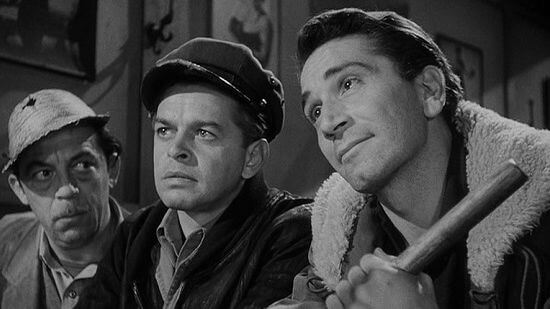
Jules Dassin’s impact on film noir is widely documented—if you need proof, just consider the fact a handful of his best contributions to the genre have landed on this very list—and among them, Thieves’ Highway is perhaps the most economical. At the same time, it’s superficially the least noirish: It’s a revenge movie, sure, but that revenge is sought by a good man driven to right wrongs done to his father. This is a movie built on a pure search for retribution, though of course it’s Dassin, so nothing is ever that simple, and in point of fact everything that can go wrong for Nick Garcos does. Who knew the world of fruit trucking could be so damn cutthroat? —A.C.
17. Raw DealDirector: Anthony Mann
Year: 1948
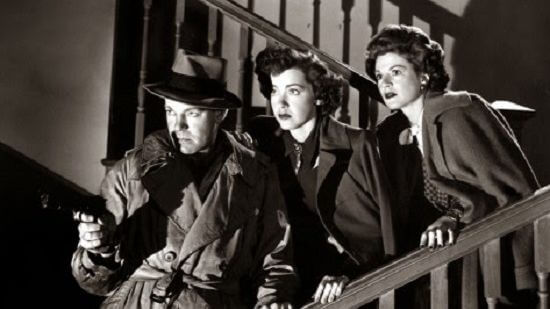
After the success of 1947’s T-Men, director Anthony Mann reteamed the following year with star Dennis O’Keefe, screenwriter John C. Higgins, and cinematographer John Alton for Raw Deal. The plot revolves around a prisoner who, after taking the fall for his boss, makes a break from the slammer with the help of his girlfriend. His boss, however, isn’t looking to reward his employee’s loyalty and sets about trying to have him killed. Much like T-Men, Raw Deal boasts some truly arresting images, courtesy of Alton, that worked to crystallize the standard noir look. And though some of the film’s story now comes across a bit rote, particularly the inclusion of a love triangle, there’s enough visual splendor and hard-hitting action to make it essential noir viewing. —M.R.
16. They Live By NightDirector: Nicholas Ray
Year: 1948
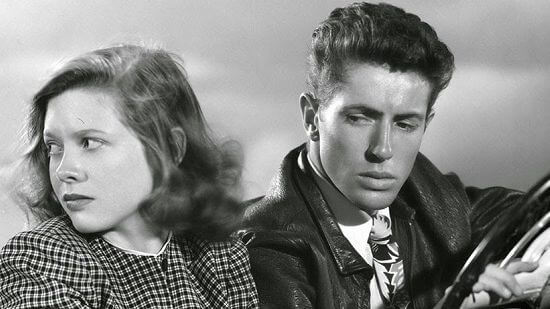
Nicholas Ray’s first picture boasts perhaps the dumbest wronged protagonist in film noir’s history. What kind of nitwit plots to clear his name in a wrongful conviction by committing a crime? Sure, fine, maybe knocking over a bank is less heinous than killing a man, but Farley Granger’s doomed hero, Bowie, doesn’t really connect the dots and realize that robbery is still a jailable offense. The intellectual merits of Bowie’s bright idea are irrelevant, though: They Live By Night cares deeply about the inescapable grasp of the law and the people who wind up caught in it. Some of them are genuinely scummy people, like Bowie’s fellow fugitives, One-Eye and T-Dub. Some of them are victims of the system, who lack the means to prove their uprightness. They Live By Night is a superlative example of an atypical noir domain—the film takes place largely on the road instead of in the city—but most of all, it’s a heartbreaking stunner about the decay of human innocence. —A.C.
15. Ace in the HoleDirector: Billy Wilder
Year: 1951
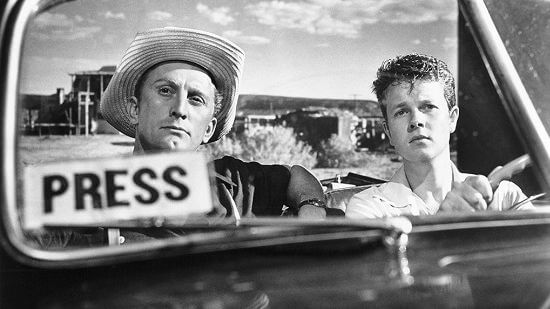
Ladies and gentlemen, meet Chuck Tatum, the forefather of Nightcrawler’s unhinged Louis Bloom. Billy Wilder’s film is a vicious, acerbic, and above all else misanthropic satire of America’s press core, but today we might be inclined to look at it as a scathing critique of American entrepreneurialism. Tatum is one enterprising man, alright, a ladder-climbing dirtbag who sees any opportunity as a golden opportunity, and he seizes them all with deceitful gusto. There’s no situation better left unexploited, if you ask him, and Wilder captures Tatum’s reckless quest of self-aggrandizement beneath New Mexico’s blistering sun. This is an outlaw America, an apathetic postwar America where rules of propriety come a very distant third to getting one over on the other guy and feeding the rushing addiction of sleaze entertainment. It’s an ugly vision that eerily predicted the direction of contemporary pop culture more than half a century ahead of its time. —A.C.
14. Elevator to the GallowsDirector: Louis Malle
Year: 1958
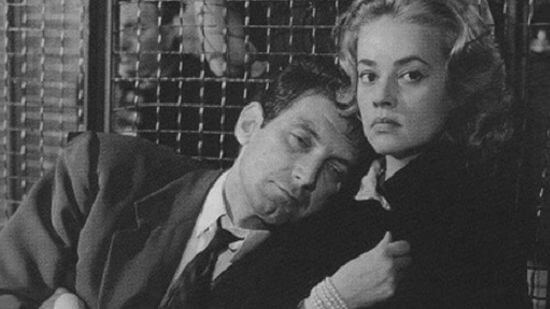
Prior to reinventing filmic language with their playful genre experiments, the members of France’s New Wave movement got their start as film critics. In fact, it was through their writings and discussions that the term “film noir” was first christened as a means of describing a certain breed of brooding postwar films. It’s not surprising then that Louis Malle—though not an official New Wave member—would settle on a film noir-influenced project as his first feature film. Acting both as an homage to noir as well as a subversion of its structure, Elevator to the Gallows stars Jeanne Moreau and Maurice Ronet as a pair of criminals whose plan to kill Moreau’s husband quickly falls apart when the Ronet character gets stuck in an elevator. This already absurd concept becomes all the more confounding when paired with the film’s unorthodox, experimental editing and somber, Miles Davis-performed jazz score. —M.R.
13. GildaDirector: Charles Vidor
Year: 1946
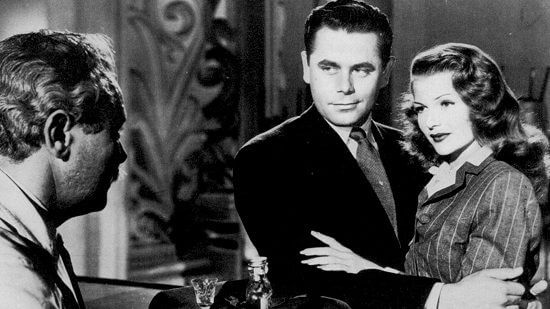
Seven years before his powerhouse turn in The Big Heat, Glenn Ford played second fiddle to Rita Hayworth—how the hell could you not?—in Charles Vidor’s exotic thriller. From the moment Hayworth whips her sultry tresses into frame—to this day, a disarmingly forward, come-hither introduction made more so by her bare shoulders—we’re as gobsmacked as Ford’s drooling puppy dog. An American thug in Buenos Aires, our narrator Johnny Farrell (Ford) cheats, and then cheats some more: first at the casino of an older businessman involved in a Nazi cartel, and then with the businessman’s young new wife, his ex, Gilda (Hayworth). Johnny and Gilda hurl emotional and physical hostilities as they love-hate on each other, both felt in equal measure. But when the businessman—now Johnny’s boss—seems to meet an untimely end, the guilt-stricken employee is determined to cruelly punish both himself and Gilda for their deceit. (Sadomasochism much?) The Argentinean intrigue is marked by crackling dialogue and cast in lush shadows by cinematographer Rudolph Maté, but Vidor wisely recognizes the film belongs to Hayworth, a femme fatale of epic proportions. With a beauty for the ages as his star, Vidor doesn’t have to do much, and his static, voyeuristic direction shows in fact he didn’t. Gilda represents the oft-discussed male gaze of noir at its most blatant—she’s largely a fetishized object. But at times the framing makes Hayworth’s erotic physicality all the more charged, and dangerous. She’s not bound (at least briefly, repeatedly) to the mise en scène, a rebellious force keenly aware of her charms. She’s also more than a little desperate, as it turns out. Just watch the visual motif of that boudoir introduction recur in the “Put the Blame on Mame” musical number-turned-striptease. Gilda taunts Johnny throughout the film, goading him with her sex appeal, and for his part, Vidor teases us, too—“Gilda, are you decent?” Define decent. —A.S.
12. Night of the HunterDirector: Charles Laughton
Year: 1955
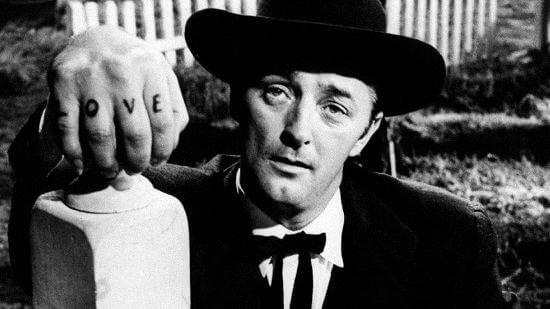
Film noir or horror—which category does Charles Laughton’s Night of the Hunter belong in? Frankly, all such quibbles are needless. The film fits snugly beneath either appellation, for one thing: It’s a hybridized version of both. (Let’s call it “film noirror.”) For another, it’s a masterwork, so fie upon labels. Night of the Hunter lurks in shadows and revels in misogyny. Whether you’ve seen it or not, you probably have the image of Robert Mitchum’s tattooed knuckles imprinted upon your brain thanks to pop culture osmosis. Reverend Harry Powell is quite the villain, a man as quick to distort the truth with honey-coated lies as Laughton is to distort reality through oblique perspective, unnerving use of shadows and light, and a dizzying array of camera compositions that make small-town West Virginia feel altogether otherworldly. —A.C.
11. The Maltese FalconDirector: John Huston
Year: 1941
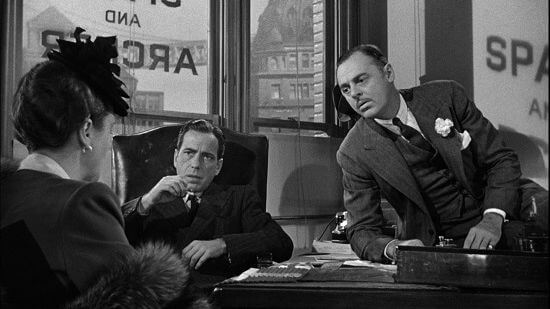
Referred to by many as the first major noir (after the more obscure 1940 film Stranger on the Third Floor), this John Huston classic set the bar for the archetypal detective, the subgenre as a whole, and the rest of star Humphrey Bogart’s career. On the surface a murder mystery revolving around yet another archetype, that of the titular MacGuffin, The Maltese Falcon is in essence a character study, a definitive assurance of masculinity and the cool objectivity it entails, by way of one Sam Spade. Bogart’s antihero is a man of honor, as it suits him—he has no qualms about kissing his dead partner’s widow while the body’s still warm, or turning in the guilty woman he loves to the police. He’s nobody’s “sap.” Interestingly, Spade’s creator, Dashiell Hammett—who once worked as a P.I.—called the character “a dream man in the sense that he is what most of the private detectives I worked with would like to have been, and, in their cockier moments, thought they approached.” In Bogart’s brusque yet smooth hands, that sounds about right. Likewise, this is the adaptation to which vastly inferior attempts, including a 1931 version of the same name and 1936’s Satan Met a Lady, could only aspire. It is impeccable in every sense. Huston also penned the screenplay, on Howard Hawks’ advice, almost verbatim from Hammett’s hard-boiled novel. He painstakingly storyboarded the drama to include complex camerawork and lighting schemes, evocative POVs, and an uninterrupted seven-minute take whose logistics boggle the mind. The violent, stylized set pieces are as visceral as the verbal confrontations. Aside from Bogie’s legendary turn, the other performances are spot-on: among them, an already scandalized Mary Astor as the femme fatale; Sydney Greenstreet (Casablanca) as hulking baddie Kasper “Fat Man” Gutman—astonishingly, his film debut; and Peter Lorre as an obviously gay associate of Gutman’s whose homosexuality was muted for the folks at the Hays Code. One of the first titles to be preserved in the Library of Congress’ National Film Registry, The Maltese Falcon is landmark filmmaking. —A.S.
10. Sunset BoulevardDirector: Billy Wilder
Year: 1950
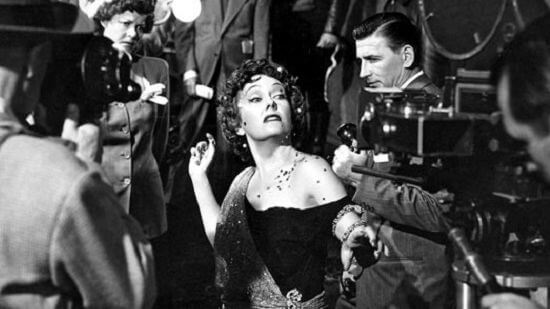
Billy Wilder’s meta noir is a doozy, an unfailingly cynical critique of showbiz and a portrait of postwar alienation projected on the microcosm of Hollywood. It’s also wickedly funny in Sahara dry fashion, from the opening words of our dead narrator—floating facedown in his killer’s swimming pool—to Norma Desmond’s concluding descent down her staircase, and the rabbit hole. Gloria Swanson is magnificent and sad as Ms. Desmond, a fading beauty of the silent screen who manipulates broke, hackish screenwriter Joe Gillis (William Holden) into becoming her boy toy. Theirs is a fated relationship from the get-go, she of the wordless era, he dependent on them for his very livelihood. They’re on the outs with their industry, and each other, yet coexist out of desperation. Wilder, who co-wrote with Charles Brackett and D. M. Marshman Jr., layered the script with in-joke upon self-referential wink, perhaps the least of which is Desmond’s passion project, about that OG of femme fatales, Salome. There’s a parade of Hollywood cameos, namechecks, and behind-the-scenes instances of “art imitating life” (and vice versa); for example, Erich von Stroheim, who portrays Desmond’s former director/first husband-turned-still lovestruck butler Max, directed Swanson in 1929’s Queen Kelly (excerpted here) before she as the film’s producer fired him, much like her Sunset Blvd. character discards his. Many of these nods were in less-than-good fun, so it’s no shock that Sunset Boulevard met with local disdain, yet Wilder doesn’t flinch. Norma, Joe, Max … they’re all unwanted souls who, try as they might to live in the past, have succumbed to the present—in Joe’s case, most finally. The smoke and mirrors of Tinseltown, of life, don’t do the job anymore (though cinematographer John Seitz, who also lensed Double Indemnity, most certainly did, sprinkling dust into the air for the lights to catch). Desmond may be a seductress past her sell-by date, but Hollywood is the ultimate femme fatale, who chews suckers up and spits them out. Sunset Boulevard gives L.A. its close-up, alright. —A.S.
9. LauraDirector: Otto Preminger
Year: 1944
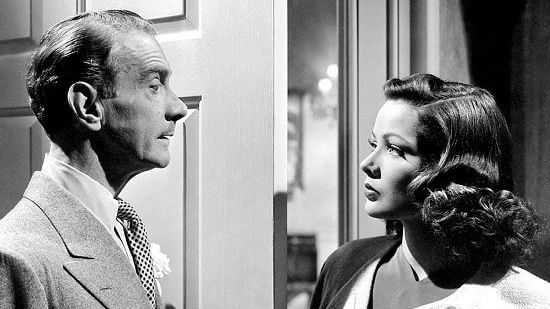
Maybe falling in love with dead people is just an occupational hazard of being an investigative detective in New York City. Then again, maybe a shotgun blast to the face couldn’t keep anybody from developing a crush on Gene Tierney, which is pretty much how the plot of Otto Preminger’s Laura goes. The film tracks the trajectory of NYPD detective Mark McPherson’s growing obsession with the eponymous young lady as he cobbles together the bits and pieces of her life and death. Poring over her diary and her letters, he comes to moon over her, and why not? She’s every bit as delightful as Preminger’s movie. Laura doesn’t waste time and stacks contrivance on top of unlikelihood, but such is the strength of Preminger’s craft and the performances of his cast that the film’s convolution doesn’t matter. —A.C.
8. Kiss Me DeadlyDirector: Robert Aldrich
Year: 1955
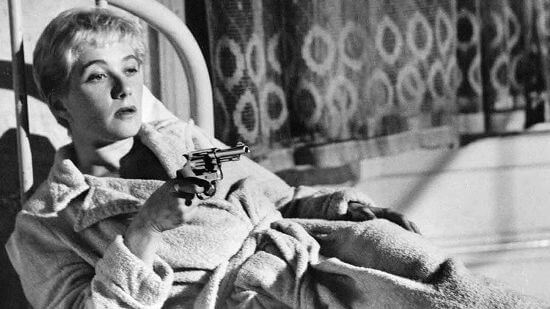
Frequently cited as an example of when film noir, to appropriate a TV idiom, “jumped the shark,” Kiss Me Deadly long ago overcame its initial bad press to become one of the most beloved and influential examples of the subgenre and its ability to tell dark, controversial stories. In that regard, director Robert Aldrich’s Kiss Me Deadly wears its insanity like a badge. Ralph Meeker stars as a hard-boiled private eye who ends up bearing witness to the brutal torture and murder of a young hitchhiker (Cloris Leachman in one her first film appearances). He decides to pursue her case, which results in the discovery of one of film’s all-time great MacGuffins—a mysterious piece of luggage that emits intense heat and a bright light when opened. (This visual went on to inspire the glowing briefcase in Pulp Fiction.) This all leads to one of the craziest, most jaw-dropping final sequences you’re likely to see in any American movie made during the Hays Code era. —M.R.
7. Out of the PastDirector: Jacques Tourneur
Year: 1947
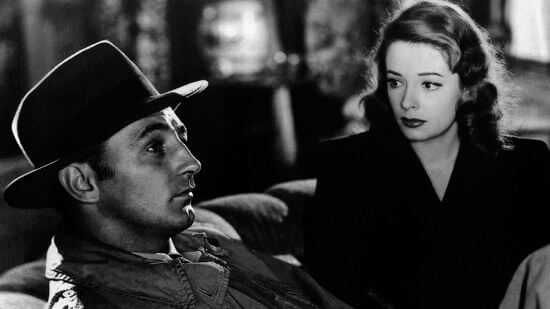
There’s no better way to describe Jacques Tourneur’s Out of the Past than “perfect.” For many, this is the epitome of all things noir, a sprawling, rambling examination of betrayal and seduction peppered with shrapnel-sharp dialogue. Out of the Past looks about as bleak as it feels. It’s savage and sexual, deeply unsettling in its nihilism and yet not utterly without hope; the final shot offers a respite of sorts from Tourneur’s otherwise unblinking sobriety. Out of the Past’s cheerlessness towers from the shoulders of its cast, a coterie of acting giants each at the top of their game. Robert Mitchum dominates, whether in his tête-à-têtes with Kirk Douglas or his simmering flirtations with Jane Greer. Together they pop, but no matter how brightly they might shine, Out of the Past remains a masterwork coated in darkness from page to screen. —A.C.
6. The Third ManDirector: Carol Reed
Year: 1949
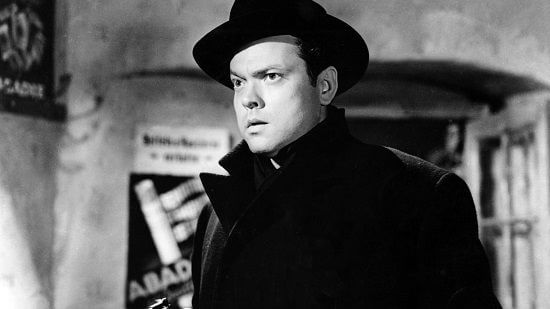
At this point, any person who calls themselves a cinephile yet has not seen Carol Reed’s phenomenal Third Man needs to stop reading this blurb immediately, carve out two hours and rectify this mistake. In all seriousness though, Vienna has rarely looked more richly cinematic than it does here, with Robert Krasker’s expressionistic camerawork capturing the feel of a city distorted. The plot centers on Joseph Cotten’s Western writer Holly Martins, who arrives in Vienna after hearing about a job from his friend, Harry. Holly is promptly shocked to discover that Harry was killed in a car accident but, suspicious of the shady details, begins to investigate his friend’s death. On the off chance anyone has remained unspoiled (or never watched Pinky and the Brain), I will leave it at that, adding only that the film boasts a brilliant performance from Orson Welles and a thrilling final-act foot chase. —M.R.
5. Touch of EvilDirector: Orson Welles
Year: 1958
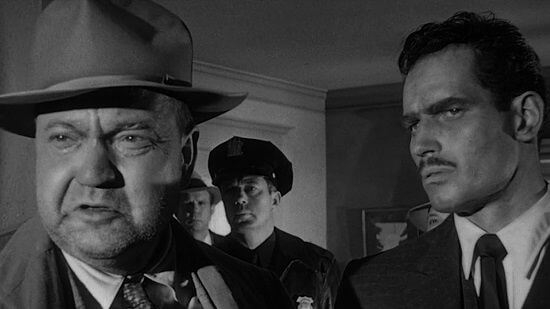
With its legendary opening, a single, crane-enabled shot just shy of three-and-a-half minutes in length, Orson Welles essentially closed the book on the classic noir era—and rewrote his own legacy in the process. Welles was 20 years into his career and a Hollywood has-been at 42 when he signed on to adapt Whit Masterson’s novel Badge of Evil for the screen. The result is a masterwork wrought by an auteur of monumental brass ones, even for Welles. The film opens at night, as a bomb is placed in the trunk of a convertible just before an unwitting couple take a drive through town. An echoing strain of horns and percussion situate us in an exotic, obviously dangerous locale, the natural sounds of the streets weaving in and out with the rock ’n’ roll playing on the car stereo. Cinematographer Russell Metty slowly pans away to refocus our attention on Mexican DEA agent Charlton Heston and his American bride Janet Leigh—a bit of breezy, expository chitchat fills us in on those details. They stroll through customs, across the border, into the U.S. on foot and share an embrace, just as the convertible explodes in front of them. In one extended take, we’re hurtled into this thriller with a minimum of screen time and maximum of suspense. Sure, Wells himself will soon command the frame as a fat, drunk, cane-toting corrupt cop, as will Marlene Dietrich as a brothel madam, and Dennis Weaver as a sketchy hotel night manager. The plot will double down with a manhunt, kidnapping, gang rape, drugs and more in a yarn as thick and filthy as Welles’ villain’s final resting place. But those first 3 minutes 20 seconds not only encapsulate a singular mastery of filmmaking—an immaculately orchestrated synergy of technical skill, storytelling, and style—they tick off practically every box on the noir checklist: gritty, maze-like streets; foreign vs. domestic threats; isolation and anxiety; the law and the lawless; the passions of a gorgeous gal and her hero; extremes of shadow and light, angles and composition; unsparing tension, and a palpable, inescapable sense of doom. Three. Unbroken. Minutes. —A.S.
4. ChinatownDirector: Roman Polanski
Year: 1974
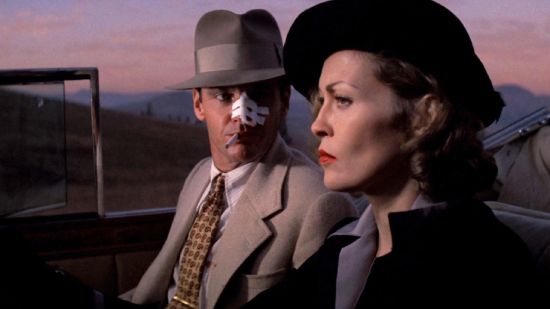
When you look at Jack Nicholson’s run of films in what I’ll call the “New Hollywood” era, starting with Easy Rider in 1969 and ending with The Shining in 1980, it’s truly astounding. There’s barely a dud on the list, so it’s really saying something that Chinatown, Roman Polanski’s crime classic, stands out among the best. The central mystery is bold for its complexity, revolving around water rights in 1930s Southern California—a plot that remains relevant today—and was undoubtedly an influence for the second season of True Detective. Like much of Polanski’s work, an ominous atmosphere works alongside the plot, shadowing every character in doubt and undermining the possibility of a clean conclusion. In Polanski’s world, the mere fact that a mystery is solved doesn’t mean there’s a happy ending, and his incredible powers of ambiguity have never been so strong as in Chinatown. Nominated for 11 Academy Awards, it won the Oscar for Robert Towne’s original screenplay. Add Nicholson at his most essential, along with a young Faye Dunaway and an aging John Huston, and this is truly one of the classics of American cinema. —S.R.
3. Double IndemnityDirector: Billy Wilder
Year: 1944
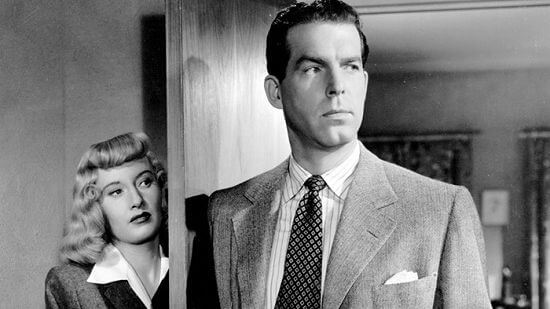
Long before the Boomers came to know Fred MacMurray as the kindly father on My Three Sons, the actor essayed his best performance in Double Indemnity as the deplorable, hard-boiled Walter Neff, who falls for a married temptress (Barbara Stanwyck) who talks him into killing her husband. Whether in film or on television, MacMurray normally played the nice guy, but for Double Indemnity he turned his everyman decency into a mask—perfect for a character who can barely conceal what a lustful, conniving bastard he is. One of the great noirs, this early effort from Billy Wilder revealed the filmmaker’s talent for wonderfully thorny, unapologetically rotten characters—and it doubles as one of the definitive mid-century Los Angeles movies. —T.G.
2. The Big SleepDirector: Howard Hawks
Year: 1946

The great granddaddy of all convoluted noirs, The Big Sleep fully embodies every single identifying feature of Raymond Chandler’s writing: dialogue that sears itself into viewers’ brains, rough-cut men, seductive femme fatales, plenty of violence, a respectable body count, and enough plot curveballs to give even the most accomplished noirs twist envy. The film almost demands to be seen twice for the sheer volume of slants and revelations. Truthfully, you’ll want to watch it more than once for Howard Hawks’ direction, Sidney Hickox’ dread-inducing cinematography, and Chandler’s barbed exchanges, not to mention the raw chemistry and animal magnetism of Humphrey Bogart and Lauren Bacall. Production codes at the time of The Big Sleep’s release prohibited it from being as graphic as Chandler’s novel, but maybe thrillers of today can learn a valuable lesson from the restrictions: Less can so often mean much, much more. —A.C.
1. The Woman in the WindowDirector: Fritz Lang
Year: 1944
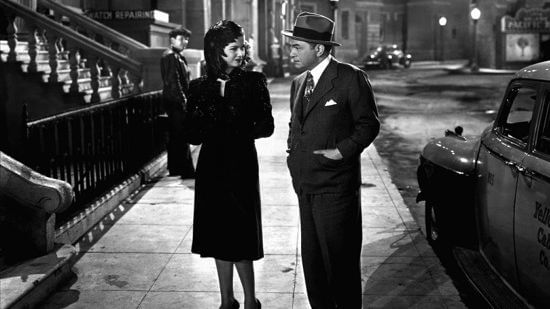
Only a master like Fritz Lang could take a trope as hackish as “it was all just a dream” and turn it into nightmare fuel. Then again, only a master like Lang could surreptitiously flip the board at censors by tacking a happy ending onto a tragedy. The Woman in the Window isn’t just one of Lang’s best films, it’s one of noir’s greatest gifts to cinema, a taut psychological mindscrew about the nature of taking life. When is it okay to take a life? When is it not? By the film’s own standards, Lang’s protagonist, Professor Wanley, kills the jealous lover of young Alice Reed in self-defense, which puts him in the clear from our standpoint. But Wanley winds up falling further and further into hot water, and we start to question the lesson he teaches his students at The Woman in the Window’s commencement. It’s such a juicy, complex film, made impeccably and with unshakable style, that there’s no need to wonder at its role in validating cinema as art and causing a sea change in film criticism as a discipline. —A.C.